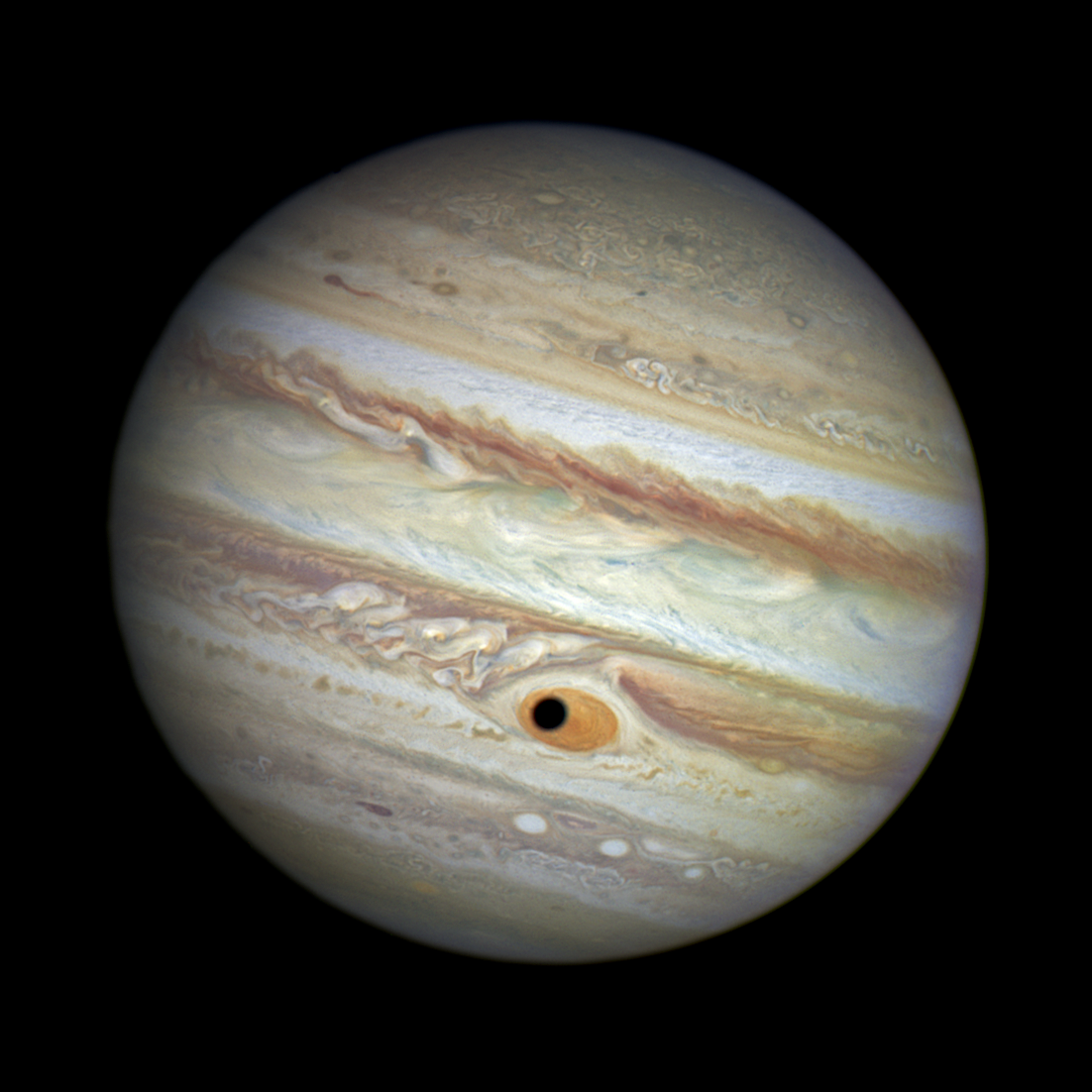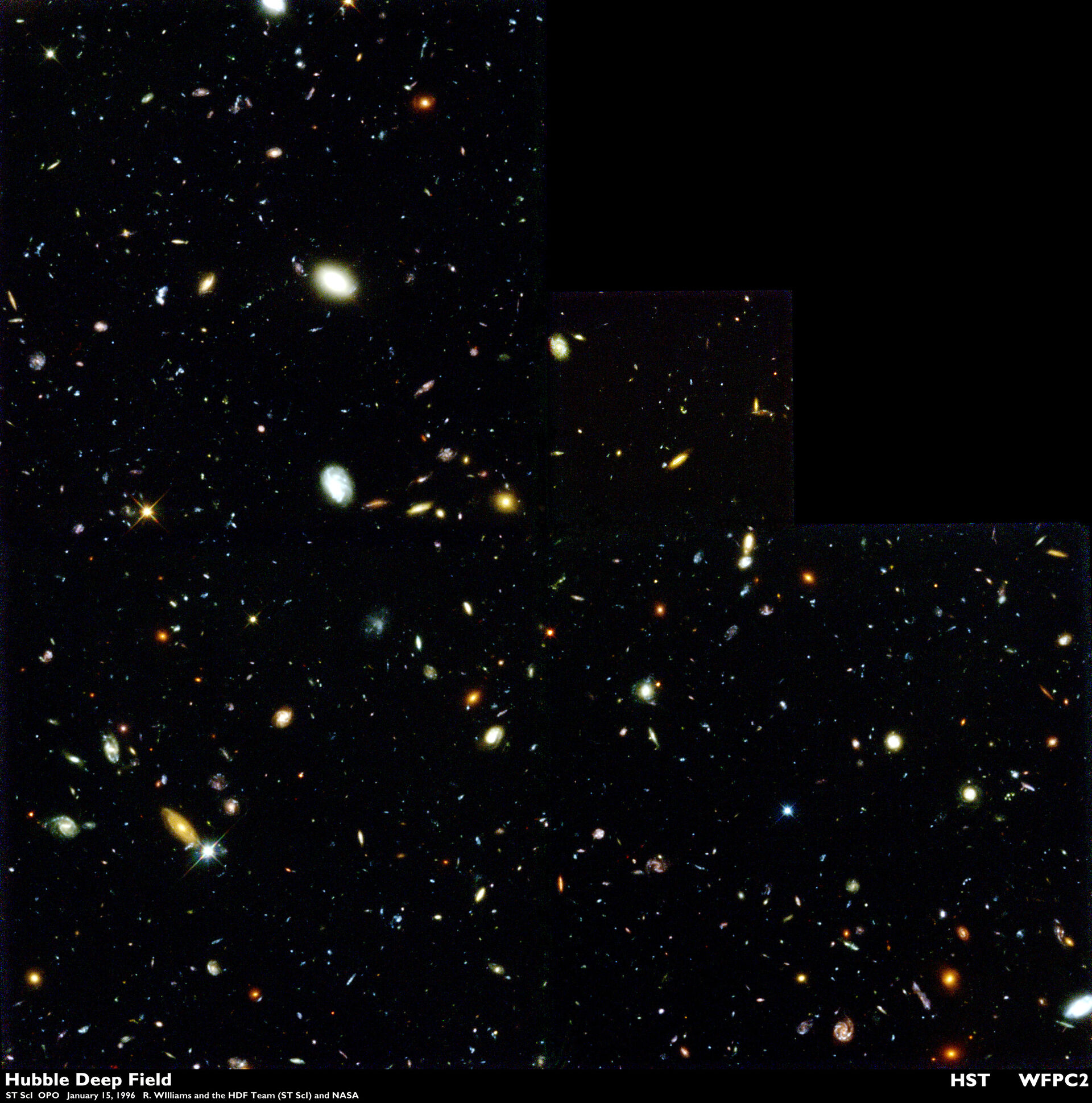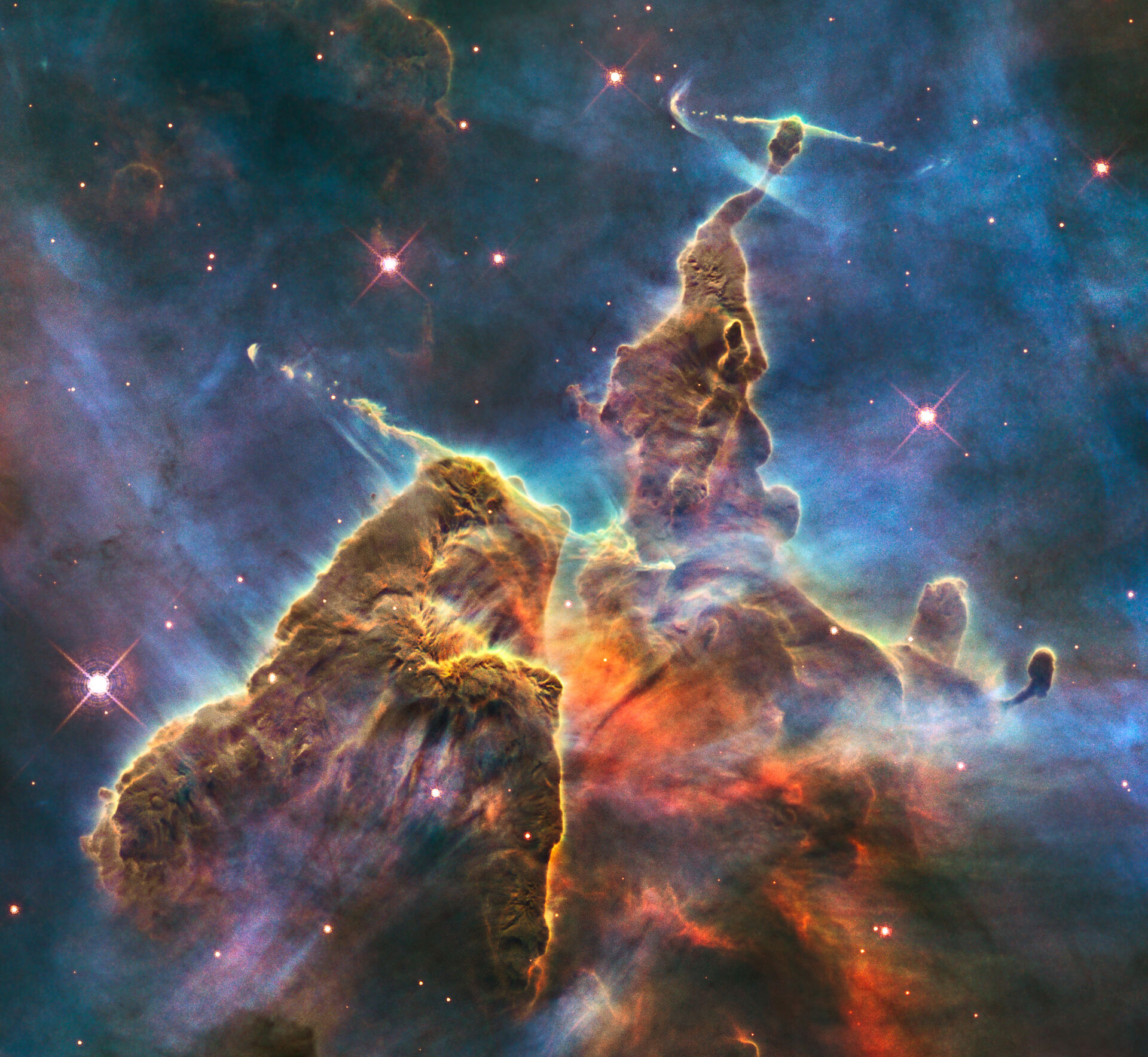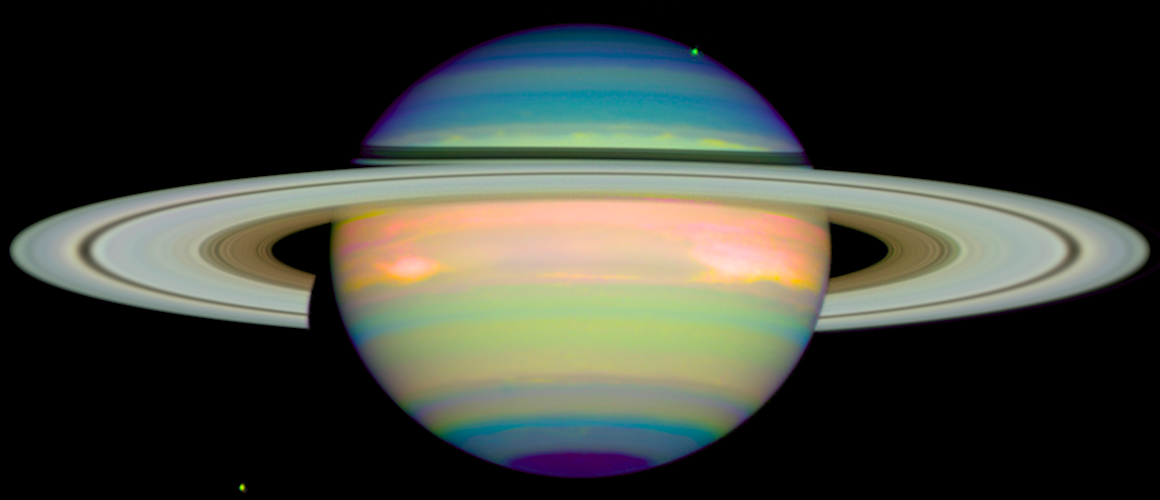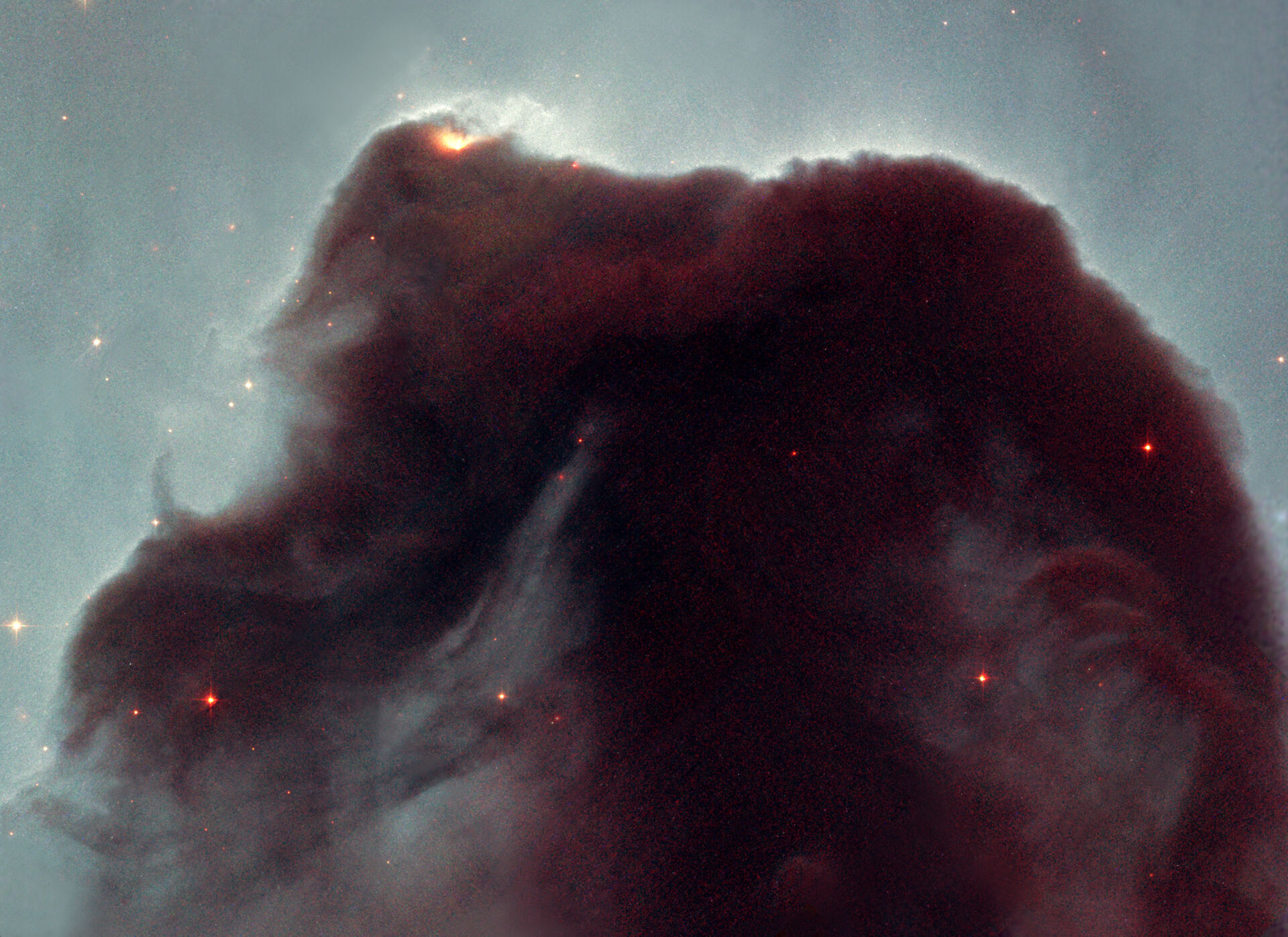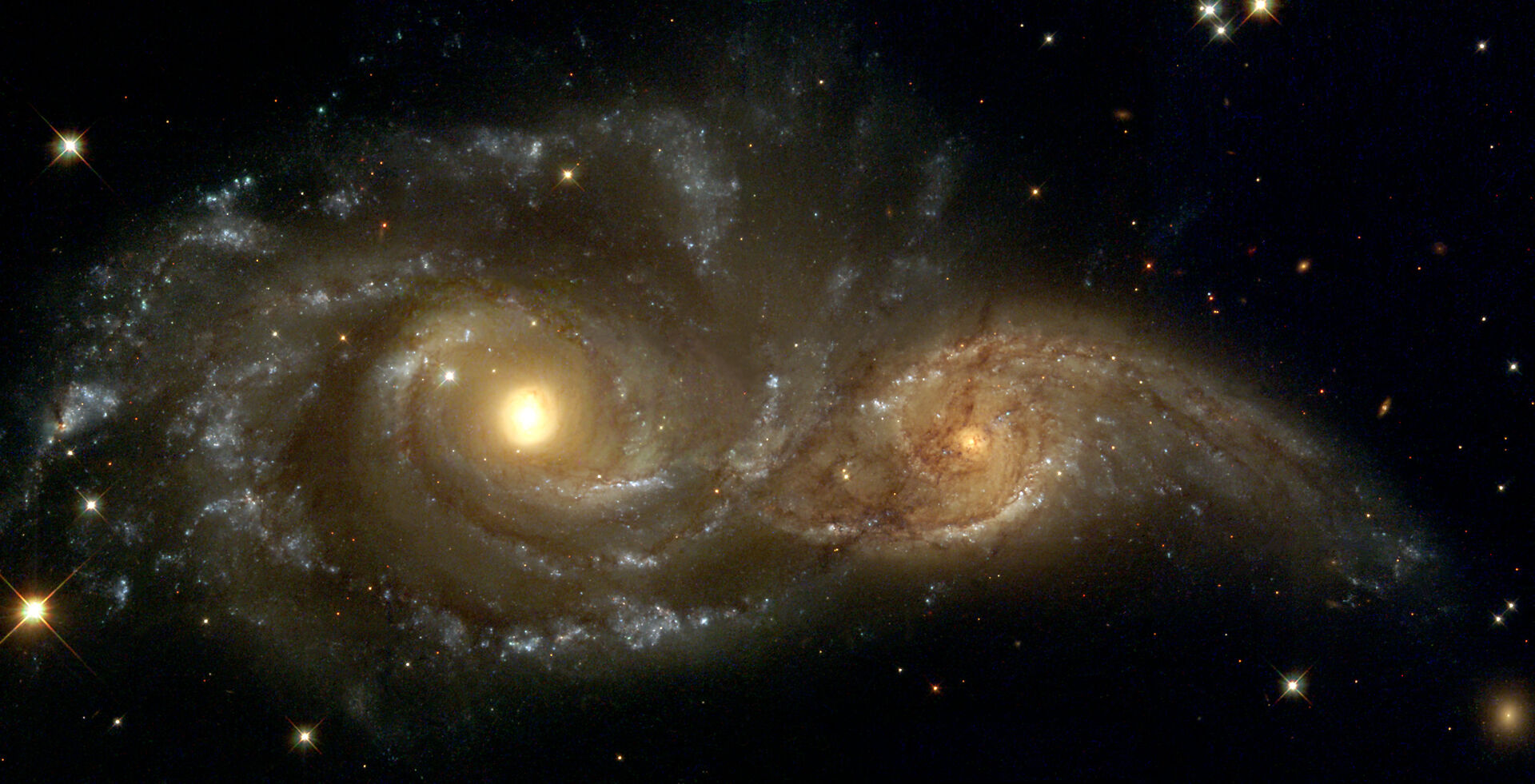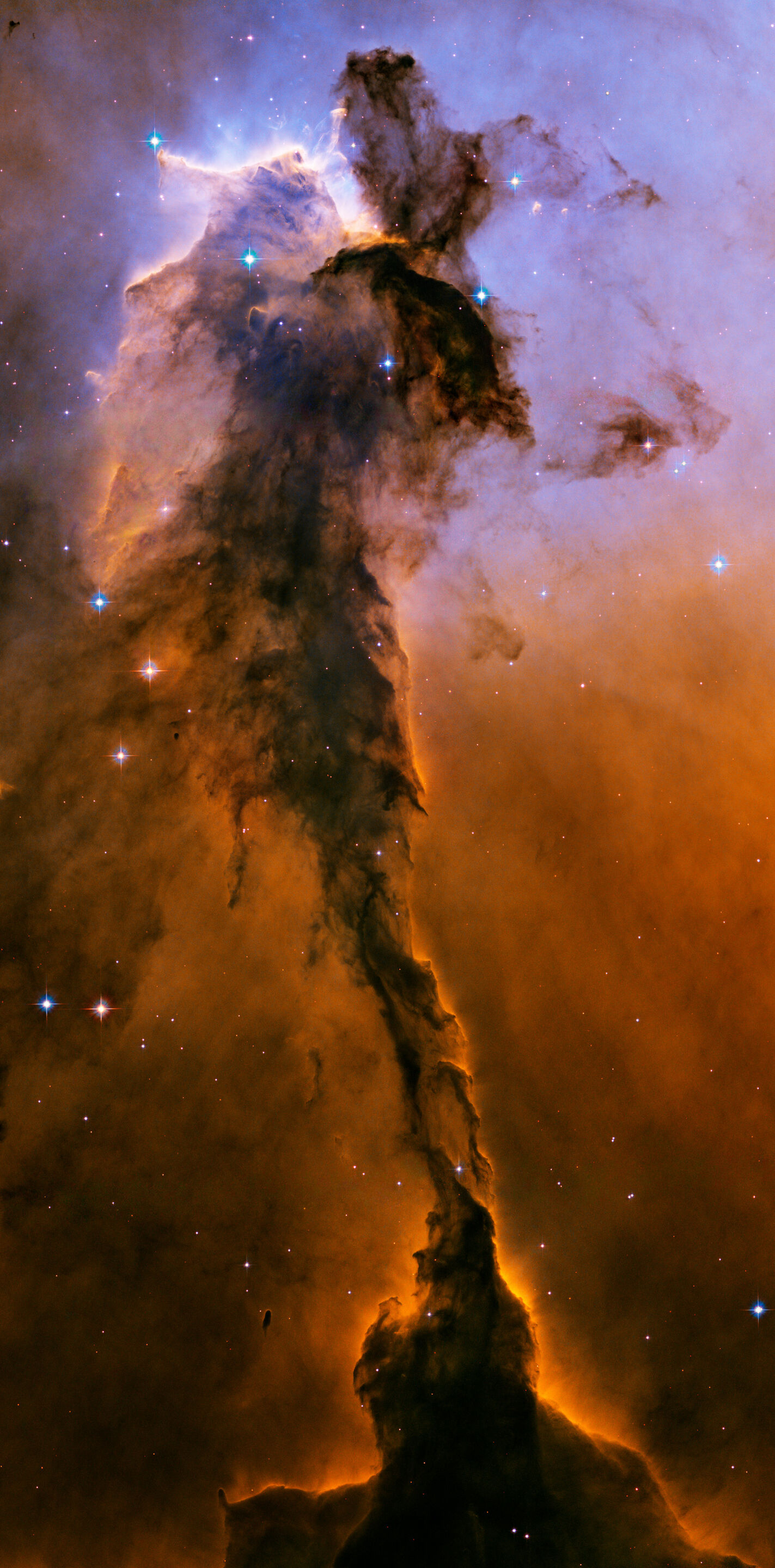
The Universe is gloriously transparent to visible light over journeys lasting billions of years. However, in the last few microseconds before light arrives at telescope mirrors on Earth it must travel through our turbulent atmosphere and the fine cosmic details become blurred. It is this same atmospheric turbulence that makes the stars appear to twinkle on a dark night.
Putting a telescope in space is one way of evading this problem. As well as collecting visible light from its orbit high above the atmosphere, the Hubble Space Telescope also observes the infrared and ultraviolet wavelengths that are completely filtered out by the atmosphere.
To celebrate 30 years since its launch, ESA/Hubble has produced a commemorative calendar (external link) of the telescope’s "Hidden Gems".

ITA's favourite gems
Since the Hubble Space Telescope opened its eye to the universe 30 years ago, it has uncovered some of the most breathtaking astronomical wonders ever seen. Astrophysicists at the Institute of Theoretical Astrophysics have chosen 29 iconic images of Hubble’s vast catalog which will be shown from the 6 April until the 24 April, day when the 30th hidden image will be unveiled to us all. Let the countdown begin!
April 6, 2020: The Whirlpool Galaxy (M51) and companion galaxy
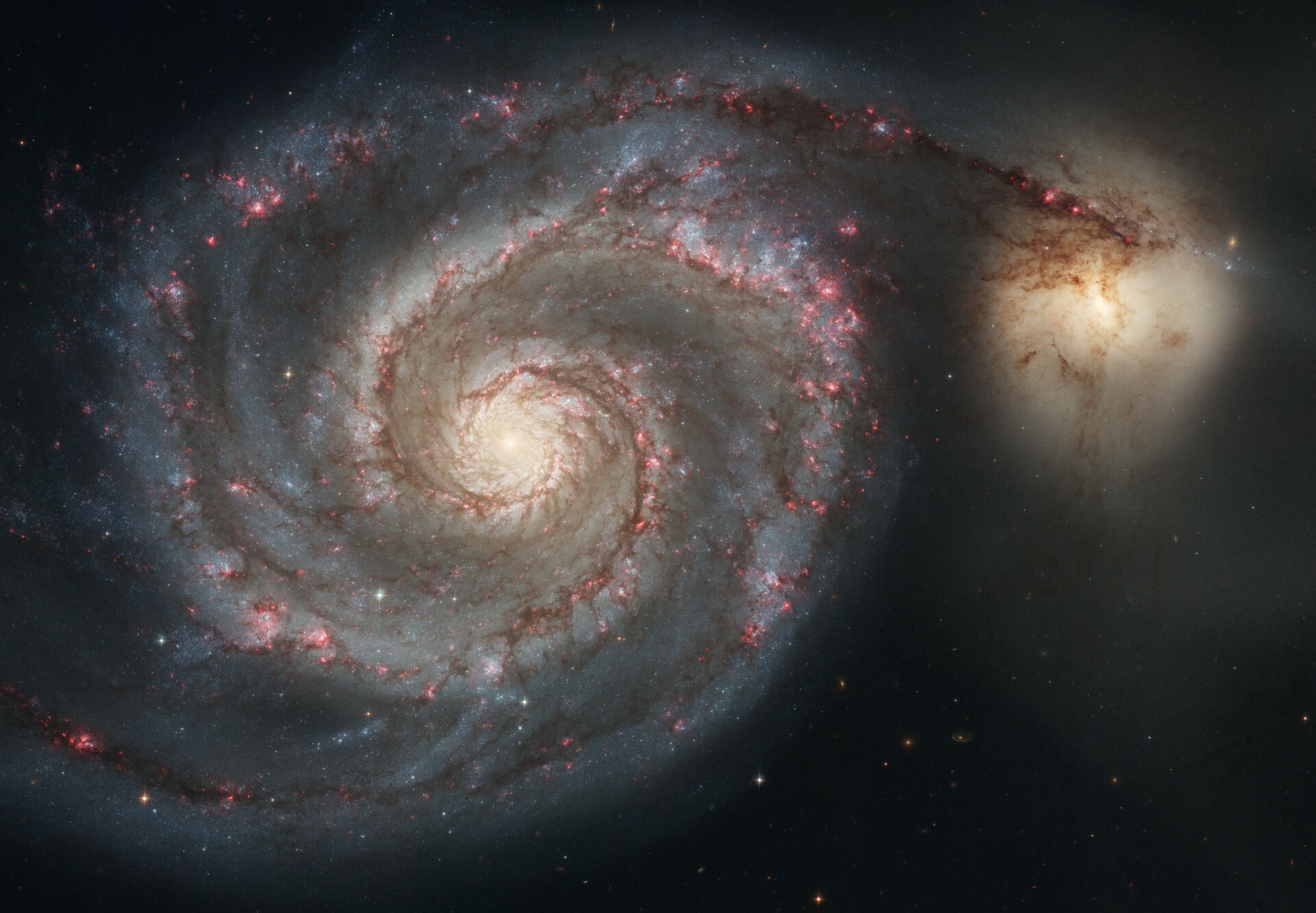
With its two prominent arms, the Whirlpool Galaxy is a beautiful example of a "grand design" spiral galaxy. But in fact the spiral arms don't contain much more stars than in between them; they just contain the *bright* ones. This Hubble Space Telescope image shows how stars are formed:
The spiral arms are not rigid structures, but patterns created by stars and luminous gas clouds. Out to a certain distance from the center, stars and gas move faster than the pattern, so they overtake it, while farther out they move slower and are overtaken. When gas clouds enter the spiral arms, they're compressed, seen in the image as dark clouds. The compression triggers star formation, seen in pink. The new stars eventually leave the spiral arms, but the most massive stars shine bright (seen in bluish/white) and die young, so they are gone before leaving the arms.
April 7, 2020: The Twin Jet Nebula
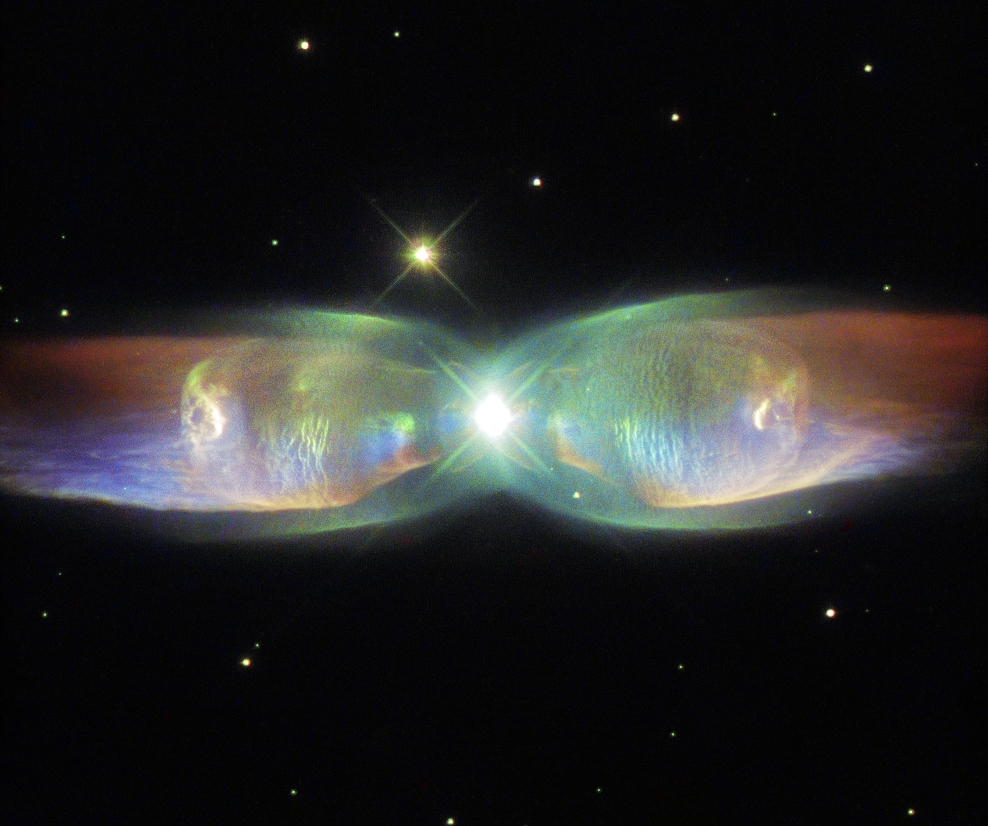
The Twin Jet Nebula is a spectacular bipolar planetary nebula located 4000 light-years from the Earth, in the constellation of Ophiuchus. It is also known as the Wings of a Butterfly Nebula, because of its beautiful shape and colours. This type of planetary nebulae is formed when the central star is in fact two stars – a binary system. The exact formation process is not known, but it is thought that as one of the stars sheds its outer layers towards the end of its life, the other star disrupts the outflow of stellar material, resulting in the bipolar shape. It is estimated that the outburst that formed this particular planetary nebula happened about 1200 years ago.
April 8, 2020: Hubble sees a Cosmic Caterpillar
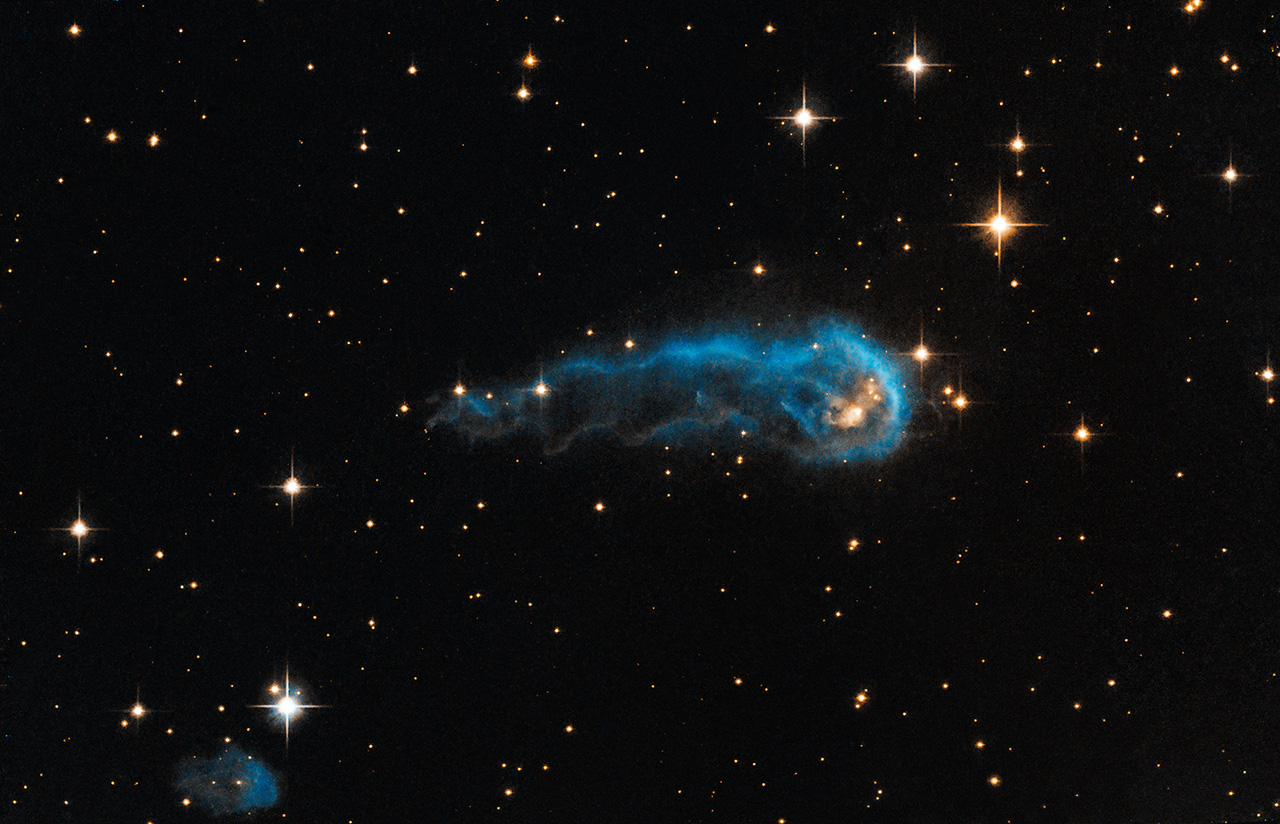
This beautiful cosmic caterpillar measuring a full light-year in length was captured by the Hubble and Isaac Newton telescopes. It is located 4500 light-years away, in the constellation Cygnus, and consists of interstellar gas and dust. In the very centre of the caterpillar's head, a protostar is growing by collecting material from the surrounding gas. The growth is, however, slowed down by 65 hot, bright O-type stars, located 15 light-years away towards the right edge of the picture, along with 500 B-type stars. Together these luminous O and B-type stars make up the Cygnus OB2 association, blasting the protostar and surrounding material with ultraviolet radiation. This is what gives the caterpillar its shape: strong ultraviolet winds coming in from the right towards the left create the long tail resulting in the cosmic caterpillar body. Eventually, the protostar should grow to become the size of the Sun, or larger, unless Cygnus OB2 strips away the gas before the protostar reaches its full potential.
April 9, 2020: Hubble image of the Ring Nebula (Messier 57)
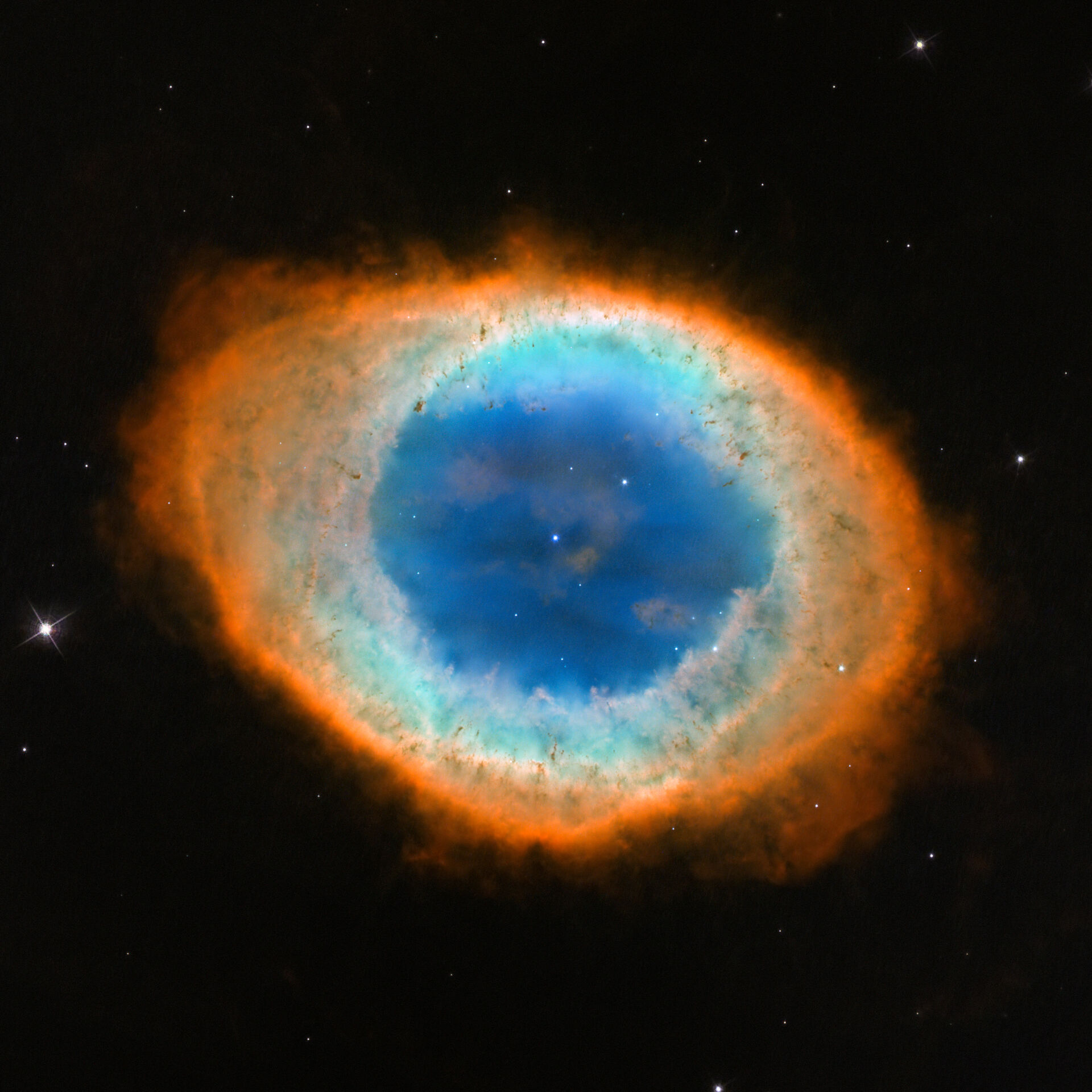
The Ring Nebula is probably one of the most famous planetary nebulae out there. With its eye-like shape and magnificent colours, it is an excellent example of the many beauties found right here in our own galaxy, a mere 2500 light-years away. The nebula stretches over one light-year, is doughnut-shaped and wrapped around a glowing ball of gas with a small stellar remnant at the very centre. The star responsible for this creation was once very much like our own Sun, until it reached the end of its life and expelled its outer layers into space. The small part of the star that remains in the centre ionizes the surrounding gas with its ultraviolet light. The blue colour in the picture is ionized helium, the cyan colour is hydrogen and oxygen, and the red colour at the very edge shows nitrogen and sulfur.
April 10, 2020: A Cosmic Kaleidoscope
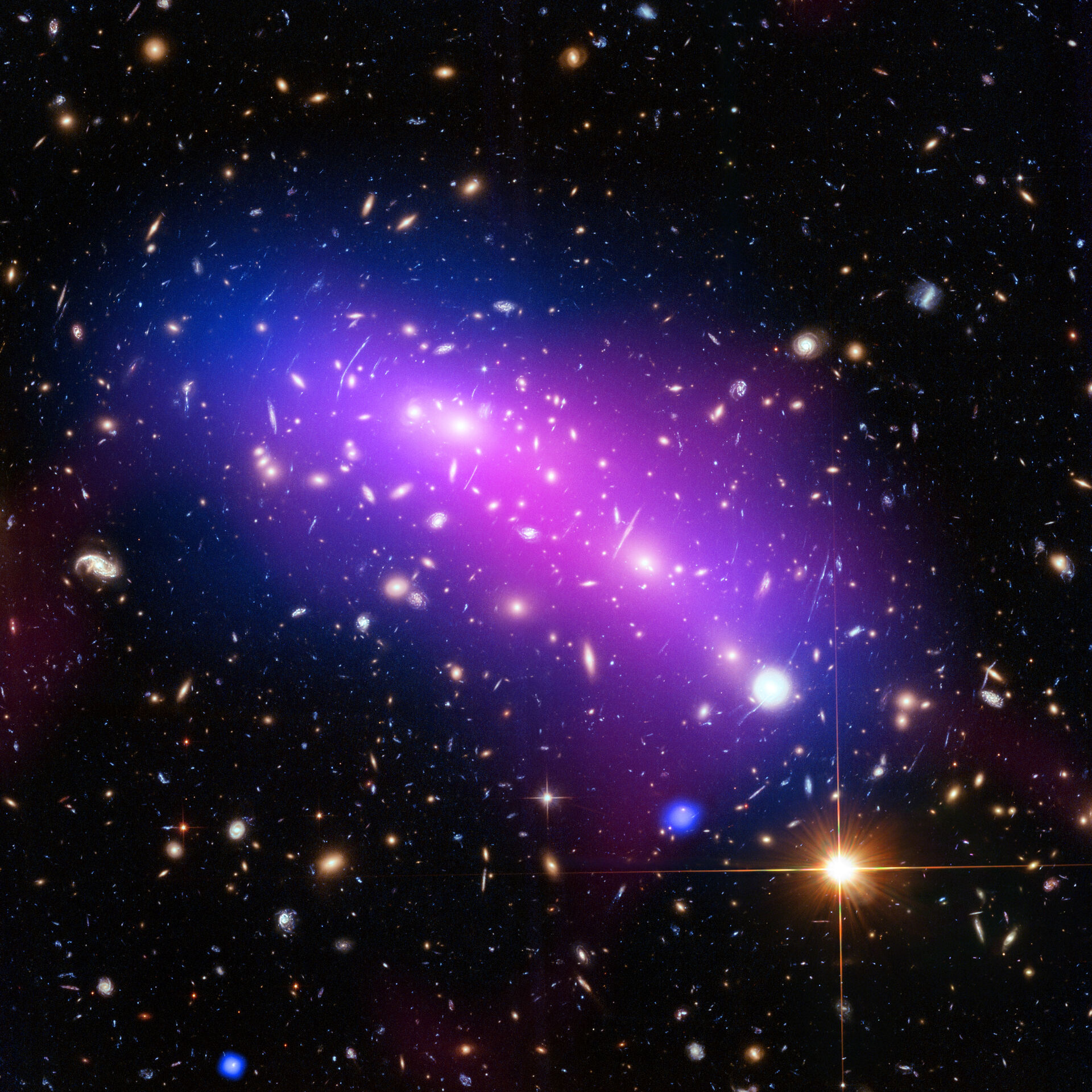
Acknowledgment: NASA, ESA, and J. Lotz (STScI), and the HFF team.
This fascinating picture is not only created by a mixture of telescopes, but it also contains an exciting blend of different fields within astronomy. The picture shows two colliding galaxy clusters, coming together to make one great cluster. The Hubble Space Telescope provides the clear view of the stars and galaxies (optical data), and the blue and pink colours are contributed by the NASA Chandra X-ray Observatory (X-ray data) and NRAO Jansky Very Large Array (radio data) respectively. The blue colour shows extremely hot gas and the pink colour traces shock waves and turbulence. In addition to tracking the galaxies, hot gas and turbulence, the dark matter content of the two galaxy clusters can be observed through the lensing effect it has on the background galaxies. This effect seems to align with the hot gas (blue), which further tells us that the clusters have yet to fully collide, as this process would result in a separation of the gas and dark matter. Altogether in this amazing cosmic potpourri, we have beautiful galaxy clusters, extremely hot gas, exciting turbulence, large shock waves, mysterious dark matter and impressive gravitational lensing.
April 13, 2020: Jupiter's Great Red Spot and Ganymede's shadow - colour
The gas giant Jupiter is the largest planet in our Solar system. It is a thousand times more massive than the Earth and could fit about eleven "Earths" across its diameter. The famous Great Red Spot, a giant storm taking place in Jupiter's atmosphere, is even in itself slightly larger than our humble home planet. Jupiter also has several moons, the four Galilean moons Io, Europa, Ganymede and Callisto being among the most famous. In this impressive picture taken by the Hubble Space Telescope in 2014, the shadow of Ganymede can be seen in the Great Red Spot – giving a fitting illustration to the term "eye of the storm."
April 14, 2020: The first Hubble Deep Field
Several hundred never before seen galaxies are visible in this 'deepest-ever' view of the universe, called the Hubble Deep Field (HDF), made with the Hubble Space Telescope. This is the very first Hubble Deep Field observed by the end of 1995. Besides the classical spiral and elliptical shaped galaxies, there is a bewildering variety of other galaxy shapes and colours that are important clues to understanding the evolution of the universe. Some of the galaxies may have formed less than one billion years after the Big Bang. Therefore this image allows astronomers to study galaxies in the early Universe.
April 15, 2020: Westerlund 2
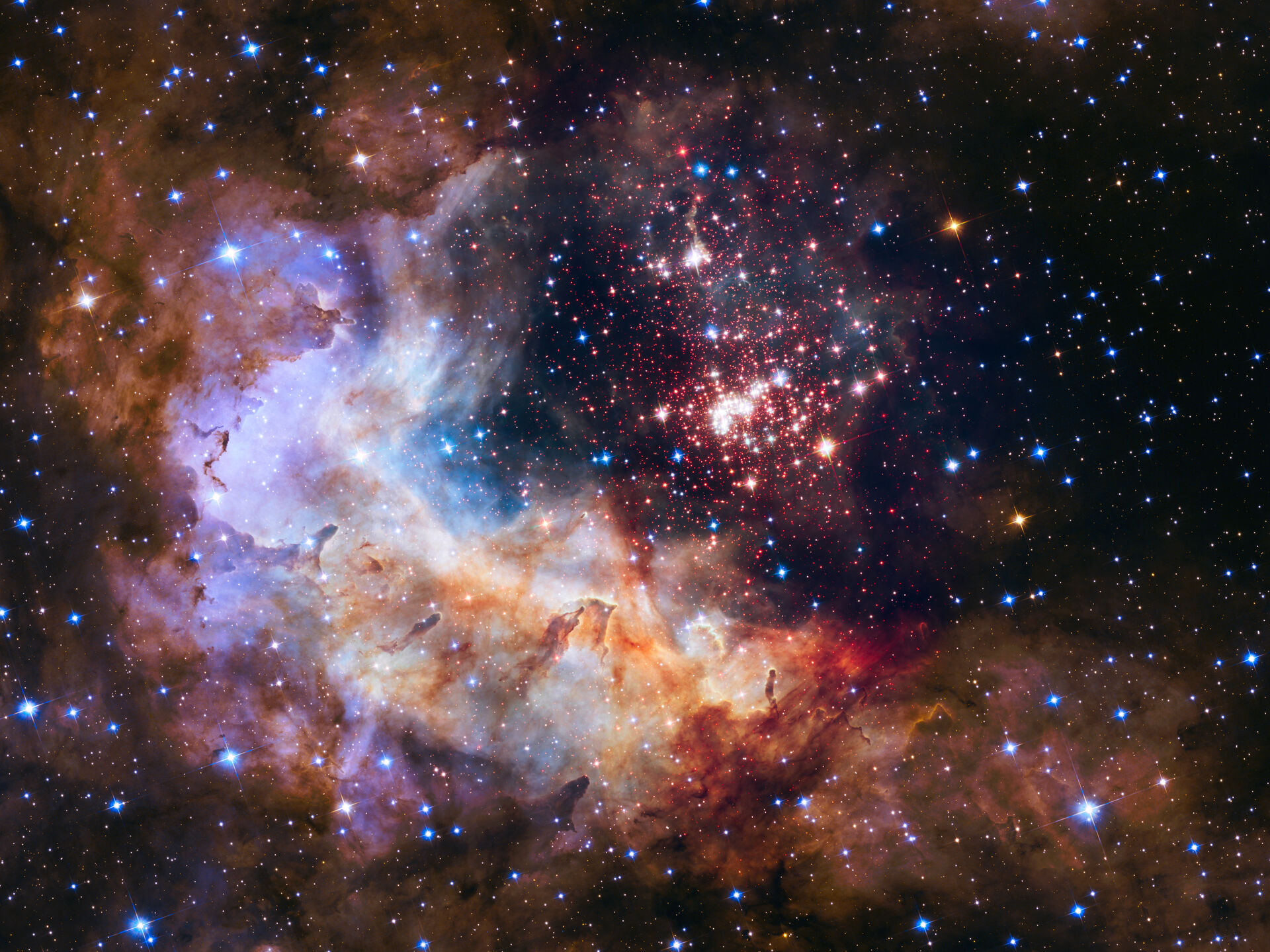
Westerlund 2 is a young star cluster, estimated to be 1-2 million years old. It is located approximately 20,000 ly away, in the constellation Carina. It contains some of the hottest, brightest, and most massive stars known. The surrounding nebula is the star-forming region RCW 49 which gave birth to the star cluster. The nebula itself makes it difficult to see the embedded stars in visible light, but it becomes transparent in infrared light, exposing the stars. The image’s central region, containing the star cluster, thus blends visible-light data taken by the Advanced Camera for Surveys and near-infrared exposures taken by the Wide Field Camera 3. The surrounding region is composed of visible-light observations taken by the Advanced Camera for Surveys. This image was released to celebrate the 25th anniversary of the launch of the Hubble Space Telescope.
April 16, 2020: Crustaceans in space
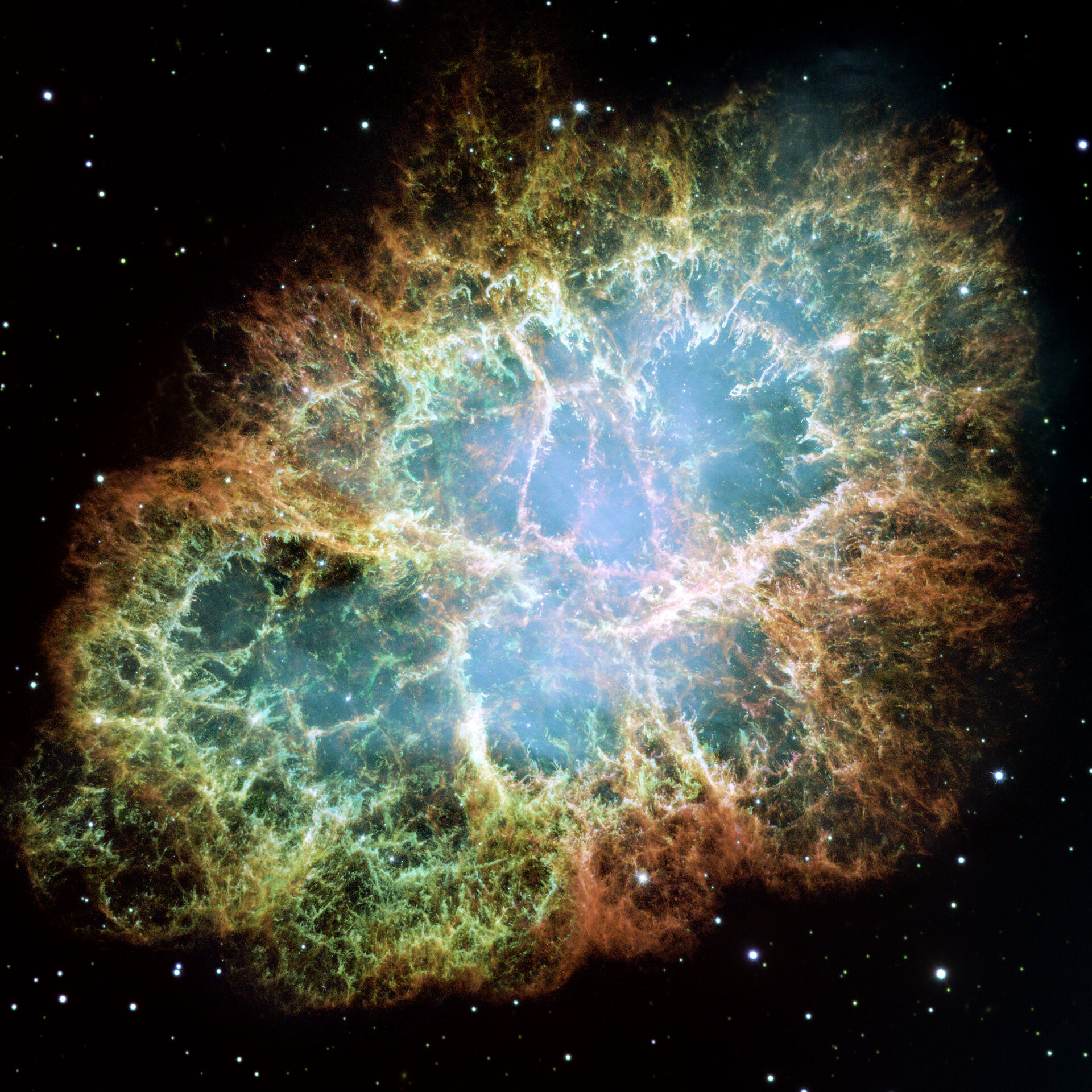
When astronomers in the early twentieth century trained their telescopes on the Crab Nebula, as seen here by the Hubble Space Telescope, they realized it was expanding at about 1500 kilometers per second. By calculating the expansion back in time it was realized that it should have been visible on Earth about 900 years ago. Historical records revealed that in 1054 Chinese astronomers observed a new "star", bright enough to be seen by day, in the same part of the sky. As luck would have it the Chinese astronomers observed and recorded a supernova, the cataclysmic death of a massive star, which left behind the Crab Nebula and a pulsar at its center. Because we know nearly the exact time of that supernova the Crab Nebula has provided valuable insight into pulsar physics.
April 17, 2020: Mystic Mountains
This starforming region is a part of the Carina Nebula, located 7500 light years away in the constellation Carina. The image shows the chaotic activity atop two pillars of gas and dust, three light-years tall, which are being eaten away by the radiation and outflows from nearby bright stars. The jets of gas that can be seen from the towering peaks, are due to infant stars within the pillars growing bigger. Hot ionised gas can be seen streaming off the ridges of the structure, and wispy veiles of gas and dust float around, illuminated by starlight. The radiation and wind from the stars will shape and compress the structure, causing new stars to form within. Hubble’s Wide Field Camera 3 observed the pillars in 2010. The colours in this composite image correspond to the glow of oxygen (blue), hydrogen and nitrogen (green), and sulphur (red). The image celebrates the 20th anniversary of the launch of the Hubble Space Telescope.
April 20, 2020: An infrared view of Saturn, Giant arcs, A cosmic dance, Space Bubbles
An infrared view of Saturn
This image is courtesy of the new Near Infrared Camera and Multi-Object Spectrometer(NICMOS), which has taken its first peek at Saturn. The false-color image - taken Jan. 4, 1998 - shows the planet's reflected infrared light. This view provides detailed information on the clouds and hazes in Saturn's atmosphere. The blue colours indicate a clear atmosphere down to a main cloud layer. Different shadings of blue indicate variations in the cloud particles, in size or chemical composition. The cloud particles are believed to be ammonia ice crystals. Most of the northern hemisphere that is visible above the rings is relatively clear. The dark region around the south pole at the bottom indicates a big hole in the main cloud layer. The green and yellow colours indicate a haze above the main cloud layer. The haze is thin where the colours are green but thick where they are yellow. Most of the southern hemisphere (the lower part of Saturn) is quite hazy. These layers are aligned with latitude lines, due to Saturn's east-west winds. The red and orange colours indicate clouds reaching up high into the atmosphere. Red clouds are even higher than orange clouds. The densest regions of two storms near Saturn's equator appear white.
Giant Arcs
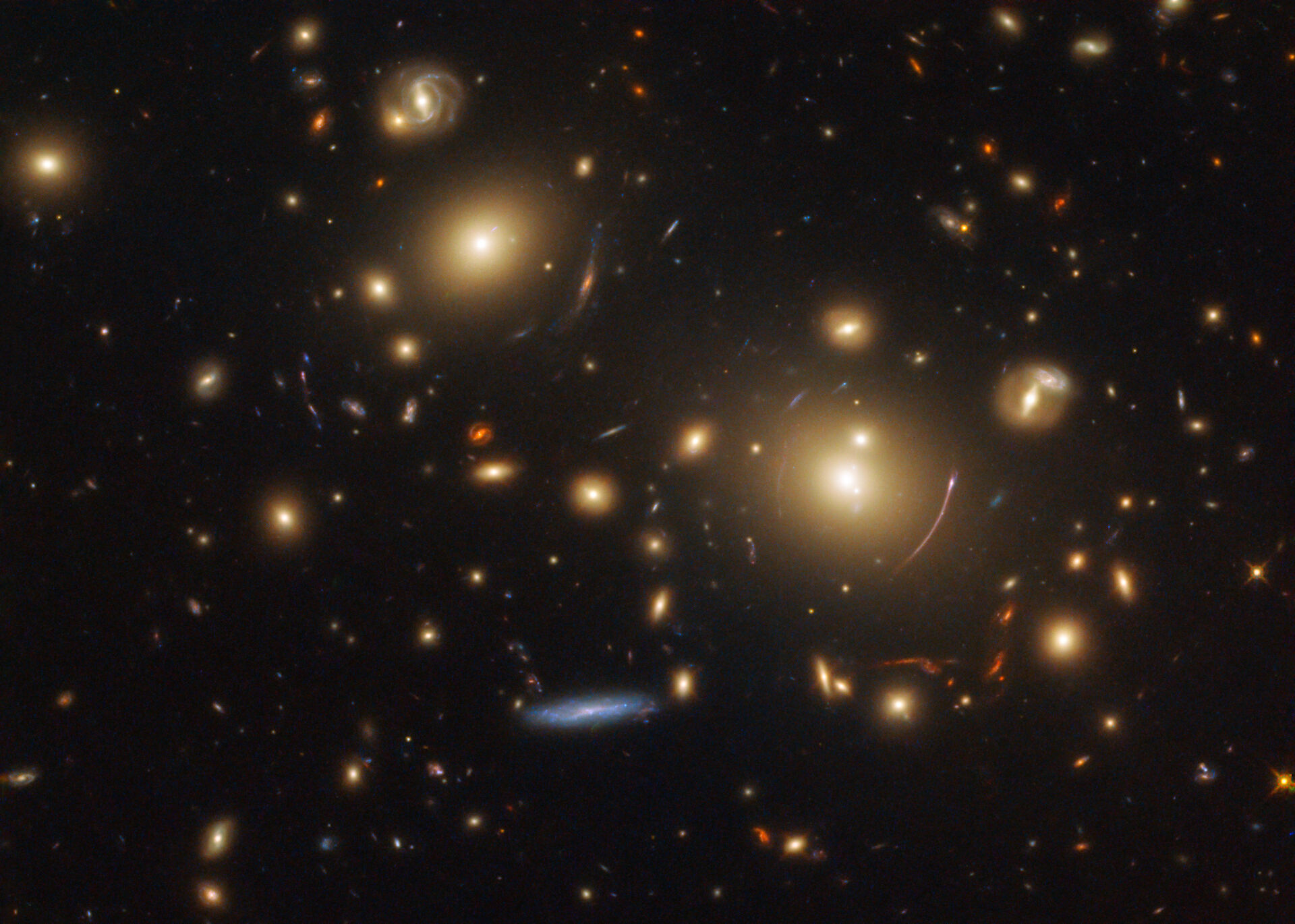
As light from distant objects travel through space their paths are curved by gravity. In this image from the Hubble Space Telescope we see this effect as the light from far-away galaxies is warped and distorted into giant arcs around the massive galaxies in the foreground. These gravitational lenses also amplifies the light, helping scientists observe deep into space and study the early universe.
A cosmic dance
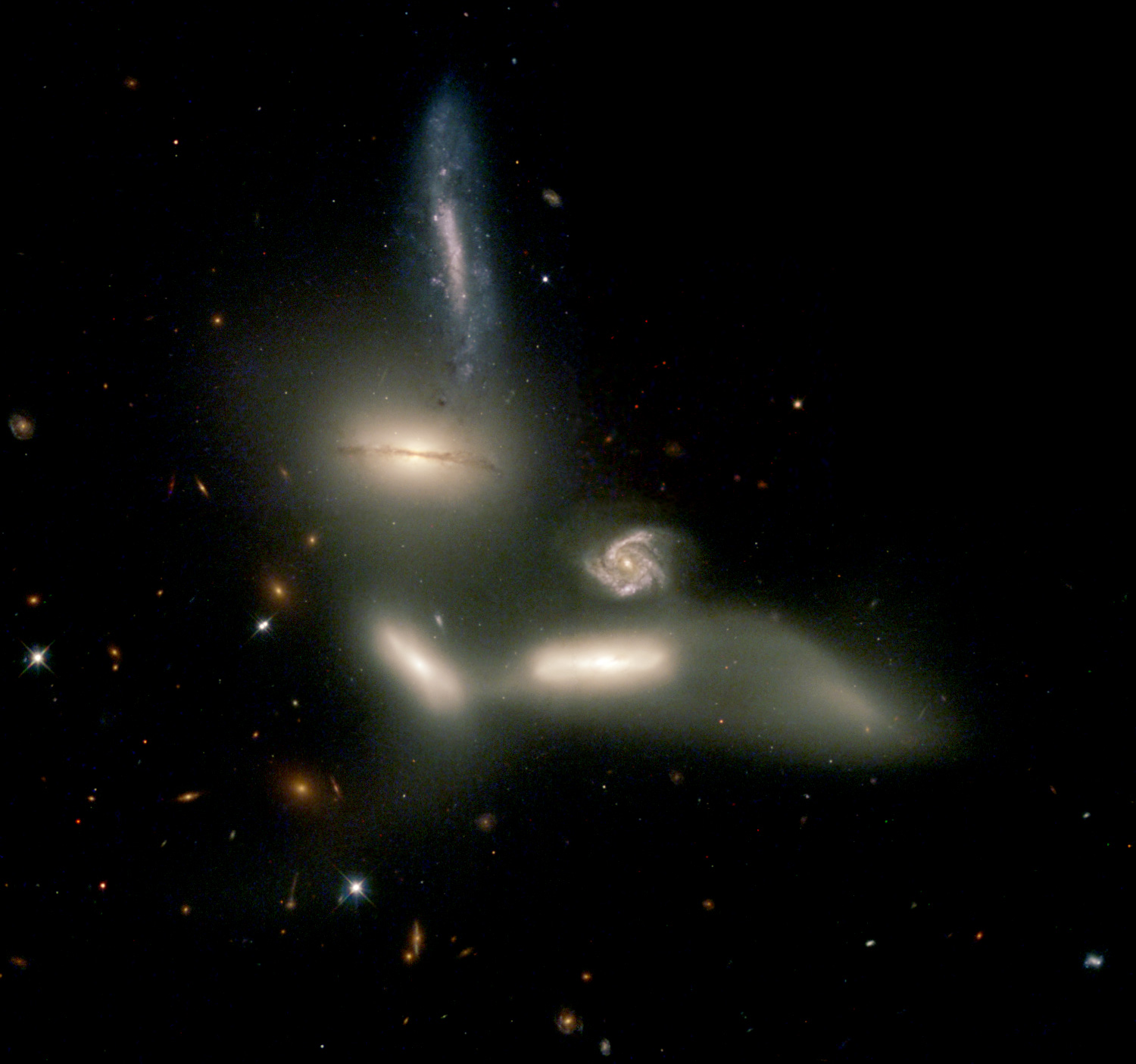
The group of galaxies, called Seyfert’s Sextet, is 190 million light-years away and undergoing a violent merging event. Their proximity to one another gives rise to huge gravitational forces causing stars to be torn away and their shapes to be distorted. And when they have complete their cosmic waltz, they will have merged into one large galaxy. But looks can be deceiving. Only four of the six galaxies seen here are actually participating in the merging. One isn’t a galaxy at all, but rather a tail of stars torn away in the heat of the dance, while the small spiral galaxy is actually almost five times further away than the rest of the group.
Space Bubbles
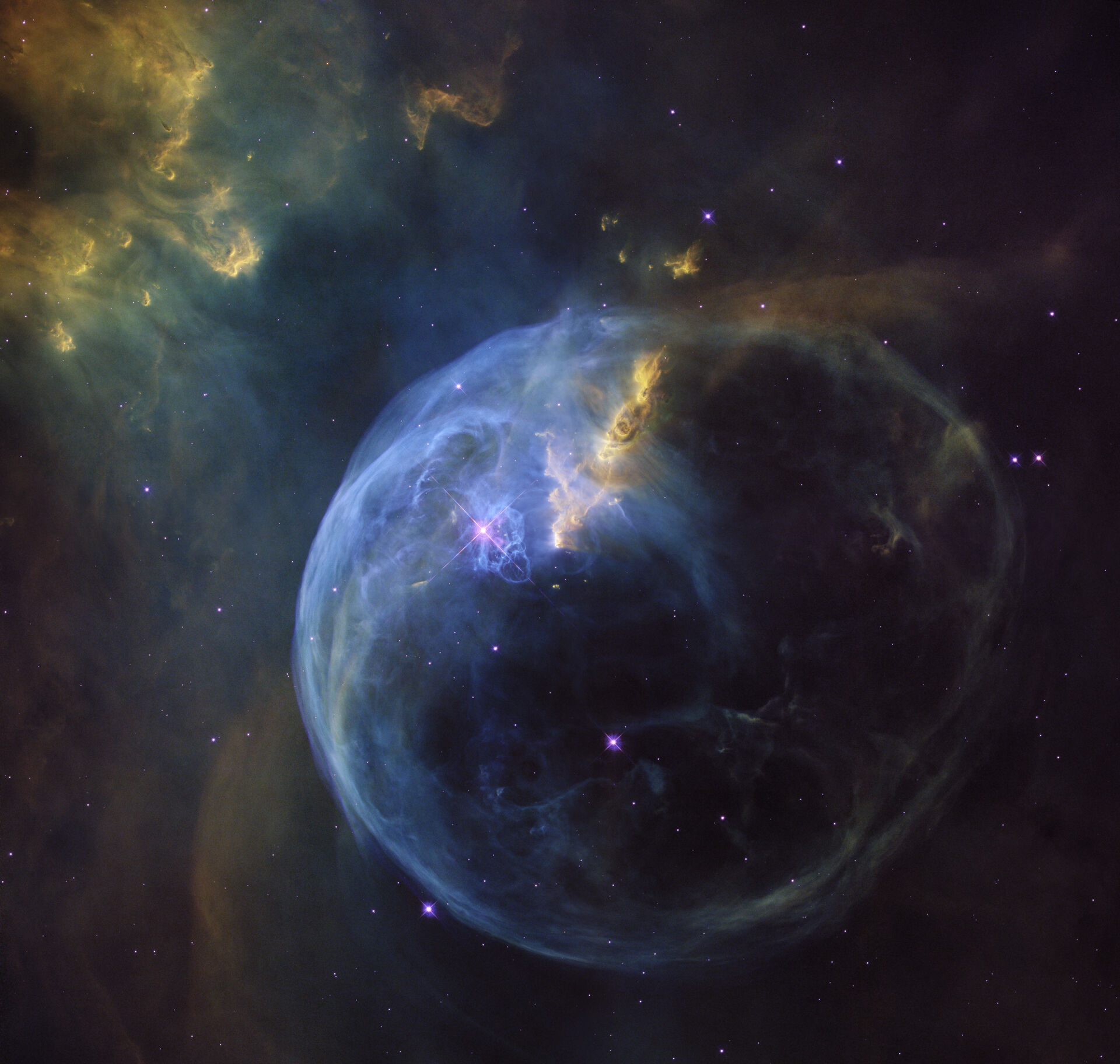
Common sense might tell us that stars should attract nearby gas and dust due to their large gravitational pull, but as they spew out matter and radiation, so-called stellar winds, the surrounding gas and dust is heated up and pushed away, creating an expanding shell of glowing gas.That is was we see in this picture of the Bubble taken by the Hubble Space Telescope. The bright central star is thought to be 44 times more massive than our own Sun. Its strong stellar wind is not only driving the expansion of the bubble, but it is also blasting a nearby dense region of matter, eating away at the gas to create finger-like tendrils and causing them to glow.
April 21, 2020: The popular Horsehead nebula, Star birth to the extreme, A cosmic encounter, A rose made of galaxies
The popular Horsehead nebula
Rising from a sea of dust and gas like a giant sea horse, the Horsehead Nebula, also known as Barnard 33, located in the constellation of Orion, is a cold, dark cloud of gas and dust silhouetted against the bright nebula, IC 434. The bright area at the top left-hand edge is a young star still embedded in its nursery of gas and dust. Radiation from this hot star is eroding its gaseous birthplace. A massive star located outside Hubble's view is sculpting the top of the Horsehead itself in a similar way. The Horsehead nebula is one of the most photographed objects in the sky. NASA/ESA Hubble Space Telescope took a close-up look at this heavenly icon, revealing the cloud's intricate structure. This detailed view of the horse's head was released to celebrate the orbiting observatory's eleventh anniversary. Produced by the Hubble Heritage Project, this picture is a testament to the Horsehead's popularity.
Star birth to the extreme
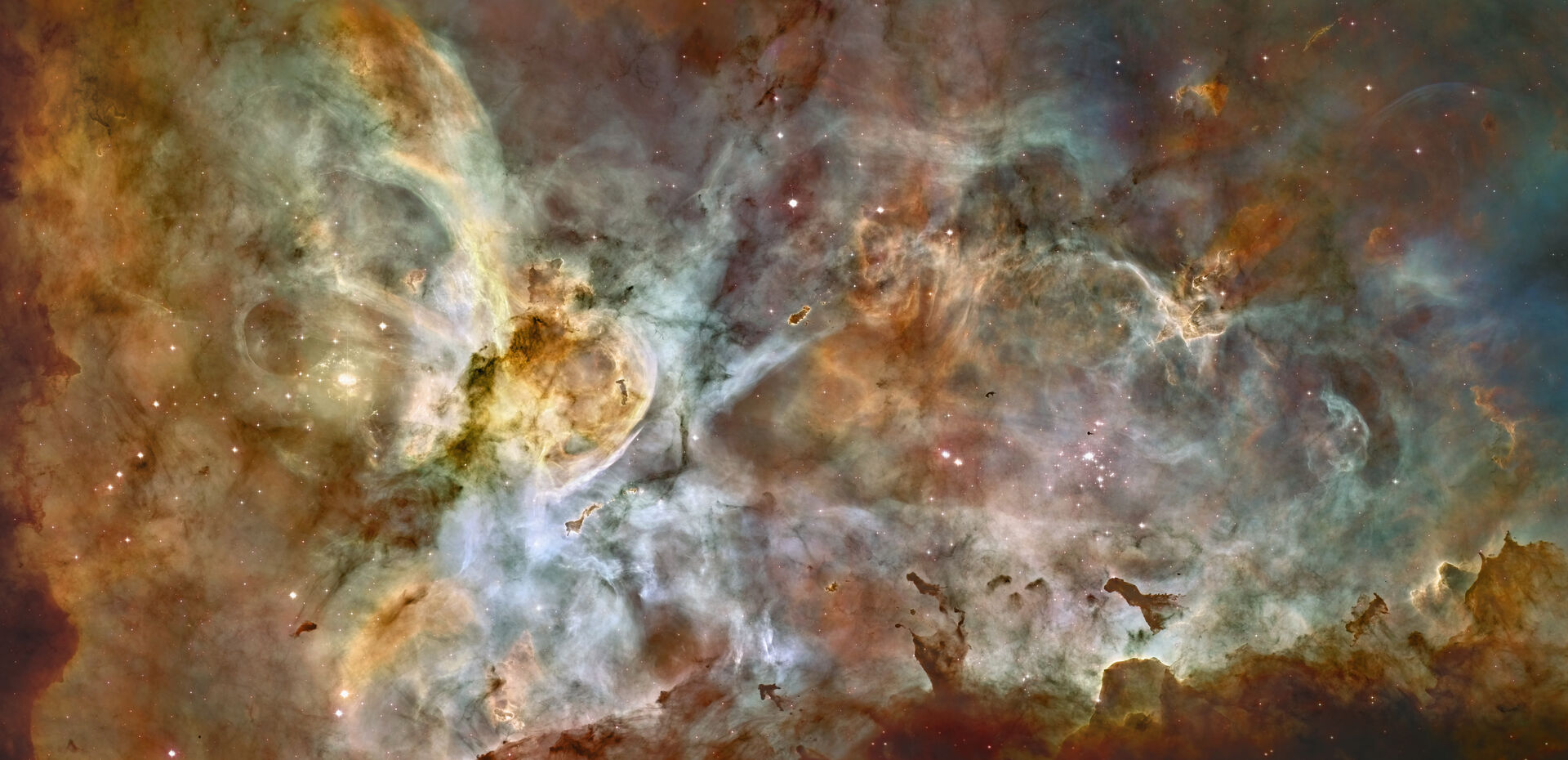
Hubble's view of the Carina Nebula shows star birth in a new level of detail. The fantasy-like landscape of the nebula is sculpted by the action of outflowing winds and scorching ultraviolet radiation from the monster stars that inhabit this inferno. In the process, these stars are shredding the surrounding material that is the last vestige of the giant cloud from which the stars were born. The immense nebula is an estimated 7,500 light-years away in the southern constellation Carina the Keel (of the old southern constellation Argo Navis, the ship of Jason and the Argonauts, from Greek mythology). This image is a mosaic of the Carina Nebula assembled from 48 frames taken with Hubble Space Telescope's Advanced Camera for Surveys. The Hubble images were taken in the light of ionized hydrogen. Colour information was added with data taken at the Cerro Tololo Inter-American Observatory in Chile. Red corresponds to sulfur, green to hydrogen, and blue to oxygen emission.
A cosmic encounter
Chance encounter like the one the Hubble Space Telescope has caught a glimpse of in this picture might appear to be a serene event, but in reality they are violent and fateful, and important for understanding the evolution of galaxies. As the galaxies approach each other gravitational forces distort their shapes and fling out stars and gas. These violent interactions can cause new stars to form at an extreme rate as giant clouds of gas collide. After some billion years the two galaxies will merge into one large galaxy, which will continue its lonely journey through space.
A rose made of galaxies
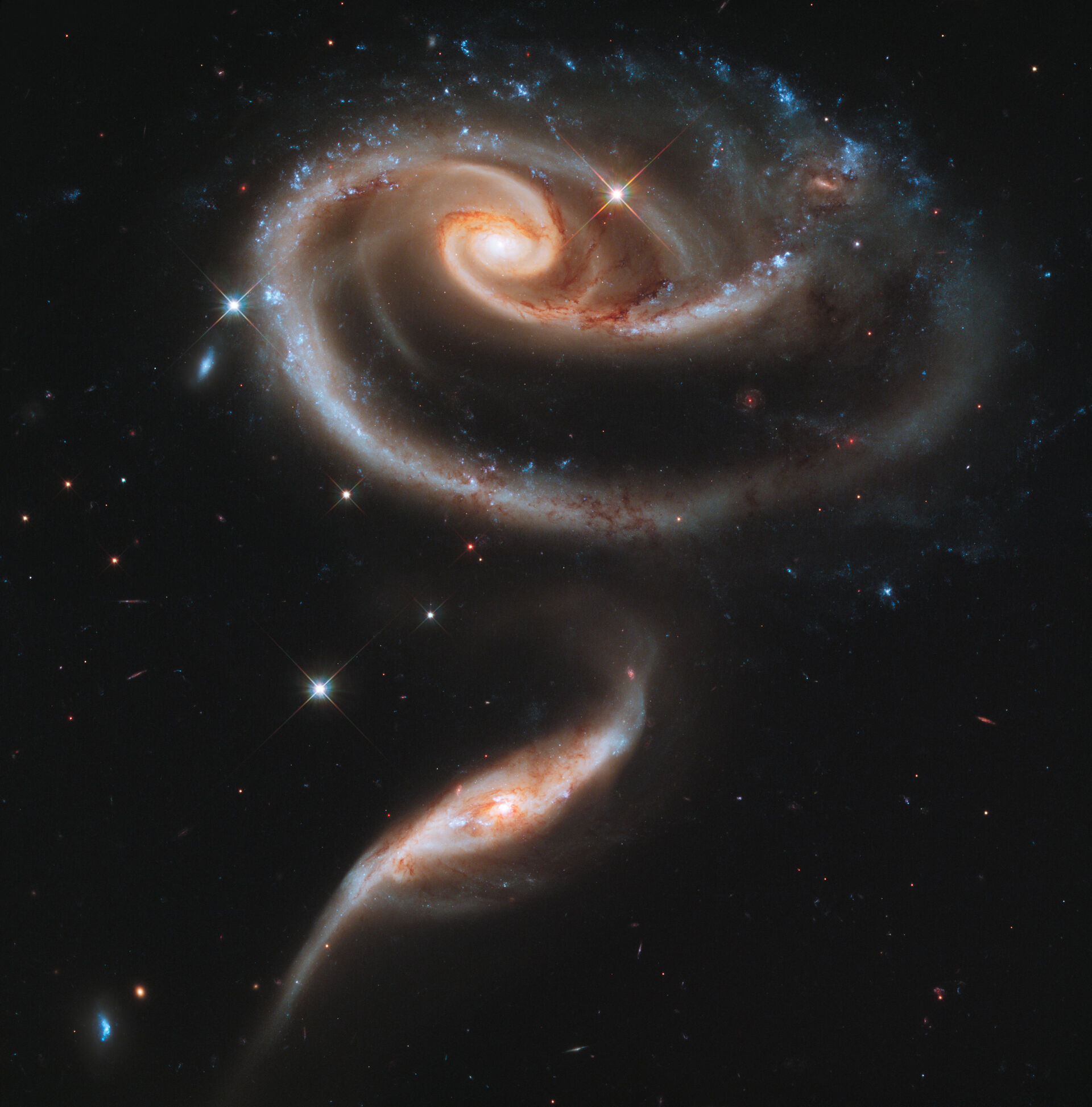
300 million light years away, in the constallation Andromeda, we find a pair of interacting galaxies called Arp 273. The larger galaxy (named UGC 1810 by itself) is approximately five times more massive than the smaller one. Arp 273 may look beautiful in the shape of a rose, but in reality, it is an ongoing battle. The detailes are still uncertain about what has happened. The distorted shape of UGC1810 shows signs of violent gravitational interactions with the smaller of the two. It is thought that the smaller galaxy has actually passed through the larger one. Eventually, UGC 1810 is likely to devour its companion before settling into a classic spiral form. This image was released to celebrate the 21st anniversary of the launch of the Hubble Space Telescope.
April 22, 2020: The Lagoon Nebula, In bloom, Globular Cluster NGC 1466, New view of the Pillars of Creation
The Lagoon Nebula
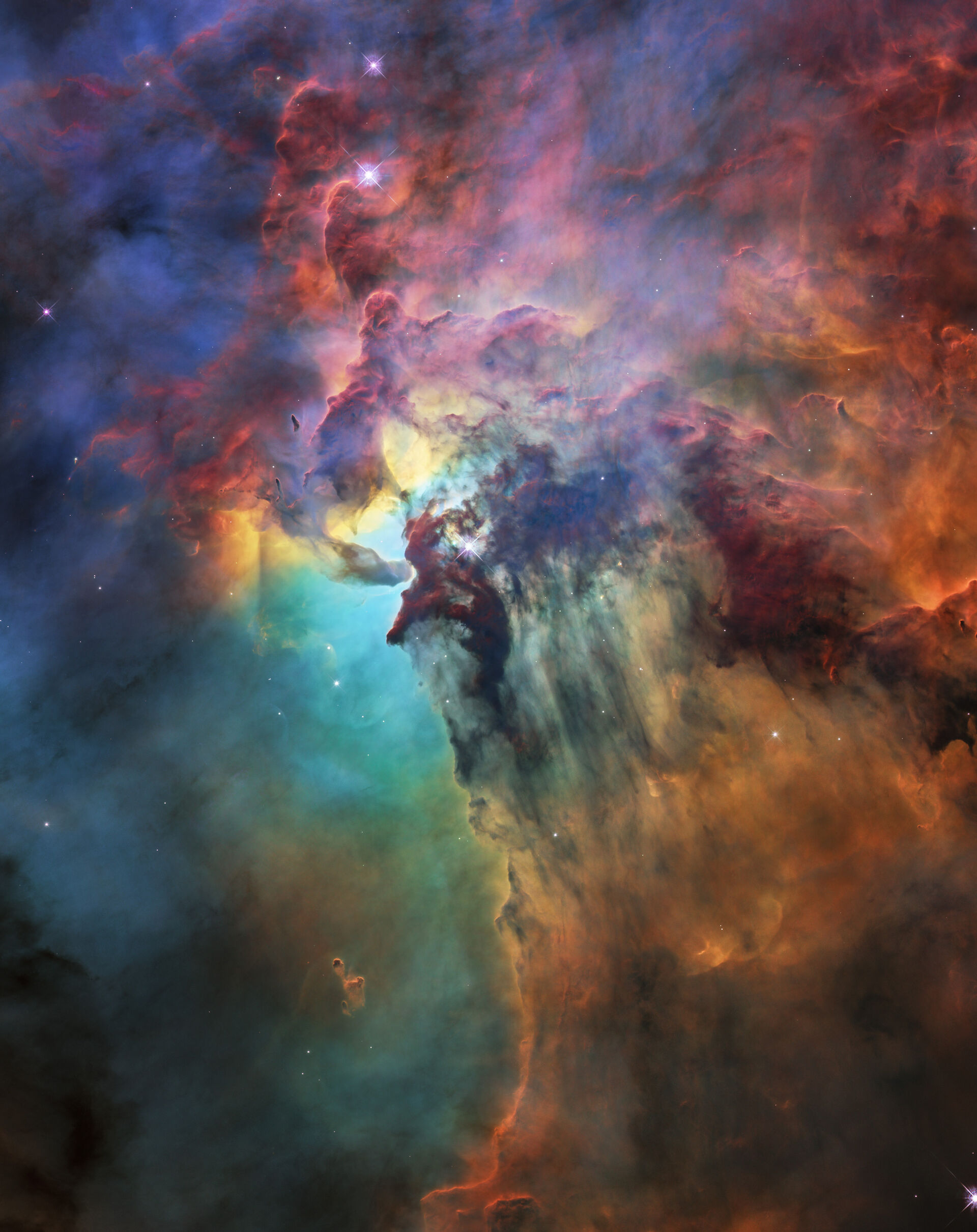
This beautiful rainbow shows the breathtaking Lagoon Nebula, located 4000 light-years away in the constellation Sagittarius. In total, this stellar nursery is an impressive 55 light-years wide and 20 light-years tall. Although the picture only shows a small portion of the nebula, about 4 light-years across, the full nebula is one of the very few star-forming nebulae visible bye eye. It was first catalogued by Giovanni Battista Hoiderna in 1654, an Italian astronomer who wanted to make sure that nebulous objects in the night sky could be separated from comets.
In bloom
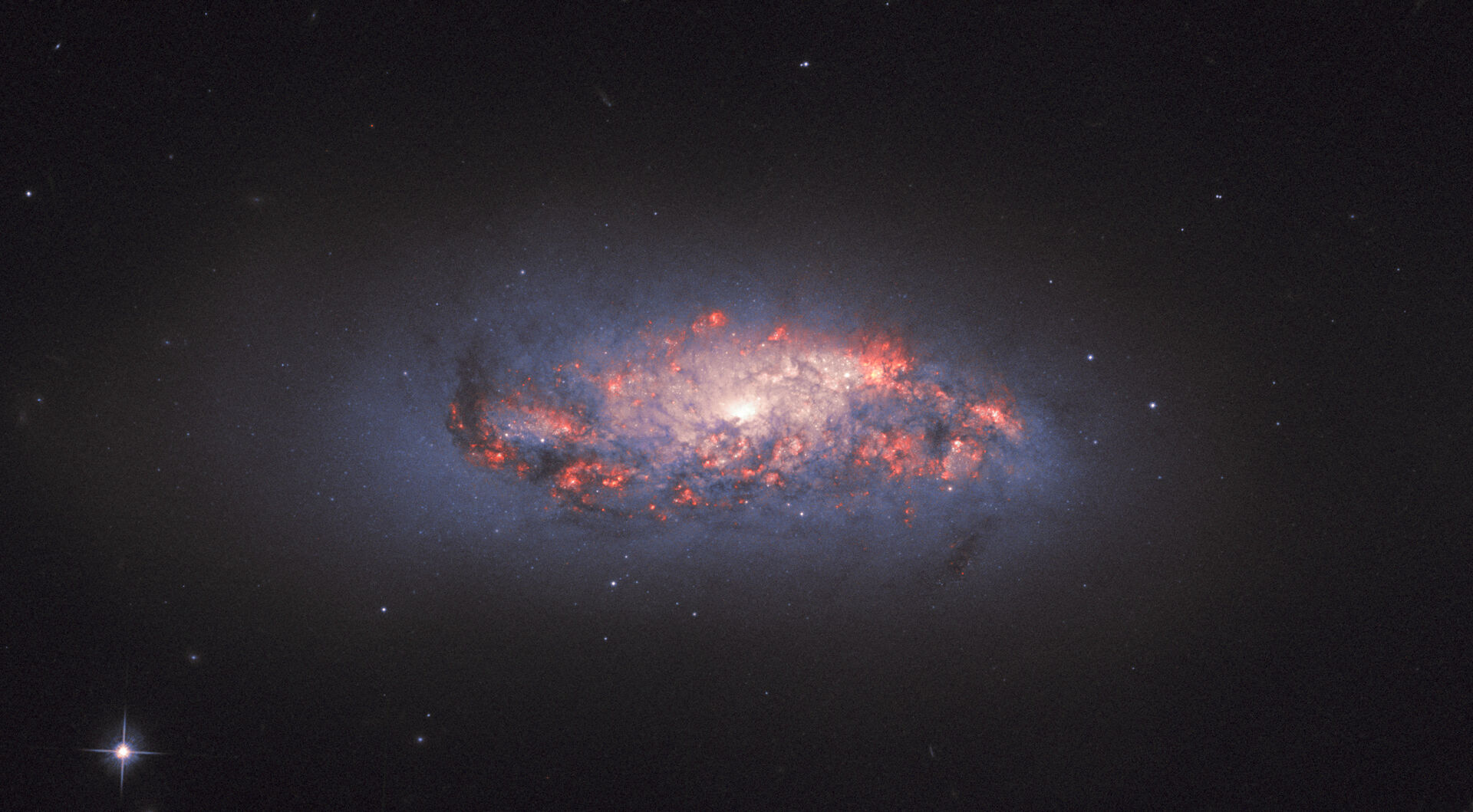
This interesting picture shows pockets of star formation in a distant spiral galaxy (NCG 972) located 70 million light-years away. As new stars are born, intense radiation floods away from them and hits surrounding hydrogen gas. This is what creates the orange-pink glowing areas, resulting in the appearance of blooming roses amidtst the dark and mysterious cosmic dust. The knowledge of star-formation history in a galaxy is important for understanding the evolution of the galaxy as a whole. The new stars will both contribute to, and be influenced by, other factors that affect the galaxy, such as gravity, radiation and dark matter.
Globular Cluster NGC 1466
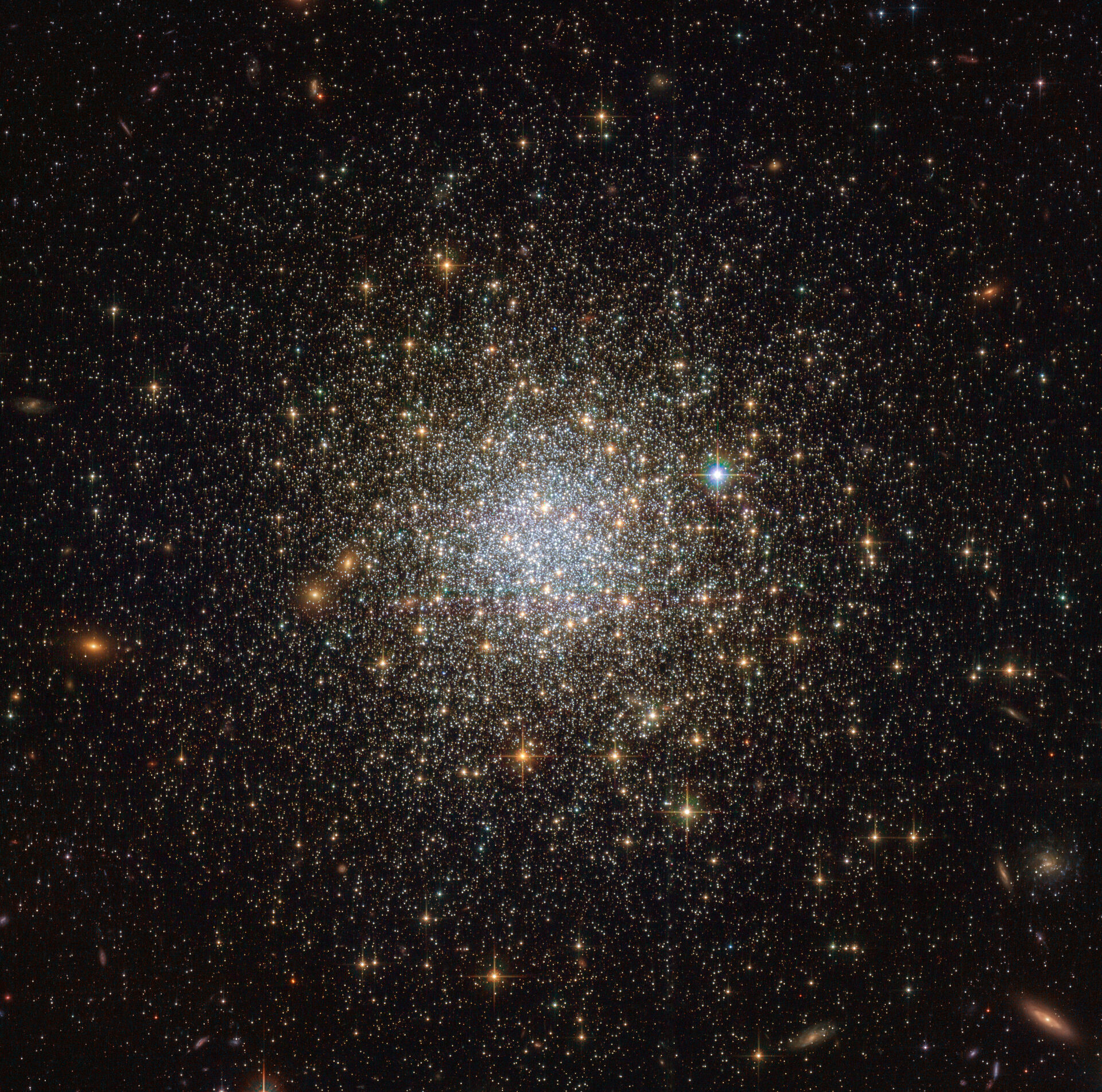
This image shows an ancient ball of stars floating outside the Large Magellanic Cloud. The many stars, which are held together by gravity, have a combined mass of 140 000 Suns and lie roughly 150 000 light-years away. What is fascinating about this globular cluster is its age. At about 13.1 billions years, it is almost as old as the Universe itself.
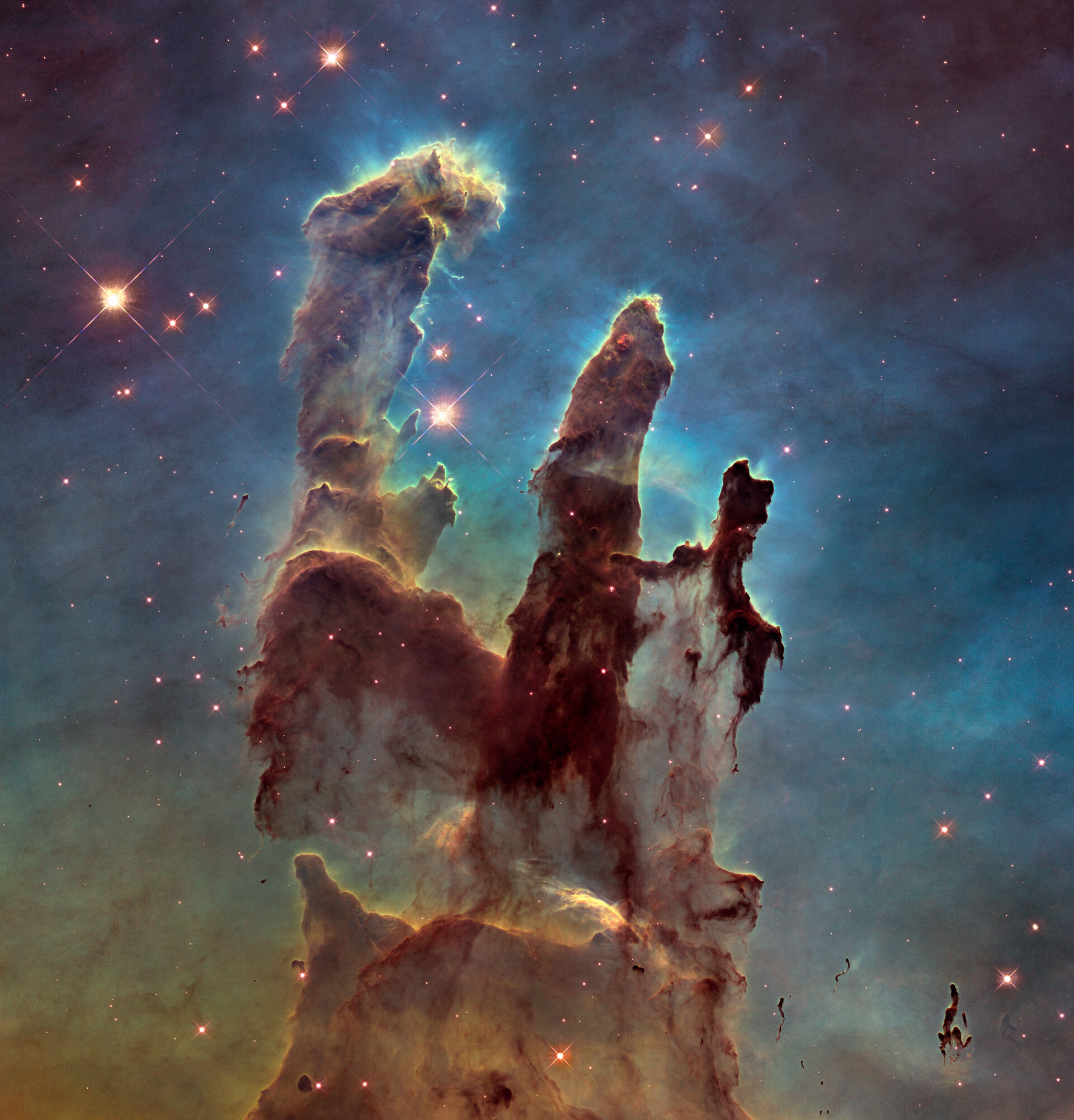
A new view of one of Hubble's most iconic and popular images: the Eagle Nebula’s Pillars of Creation. This image shows the pillars as seen in visible light, capturing the multi-coloured glow of gas clouds, wispy tendrils of dark cosmic dust, and the rust-coloured elephants’ trunks of the nebula’s famous pillars. This star-forming region is located in the constellation Serpens and is 7000 light years away from us. The dust and gas in the pillars is seared by the intense radiation from young stars and eroded by strong winds from massive nearby stars. It was first captured by Hubble in 1995, whereas this image is from 2014. With these new images, taken 20 years after the first ones, comes better contrast and a clearer view for astronomers to study how the structure of the pillars is changing over time. There is a possibility that the pillars have been destroyed by a nearby supernova explosion, but it will be 1000 years before we can see it from Earth.
April 23, 2020: An interstellar butterfly, The Eagle Nebula, A Perfect interstellar pattern, The Red Spider Nebula
An interstellar butterfly
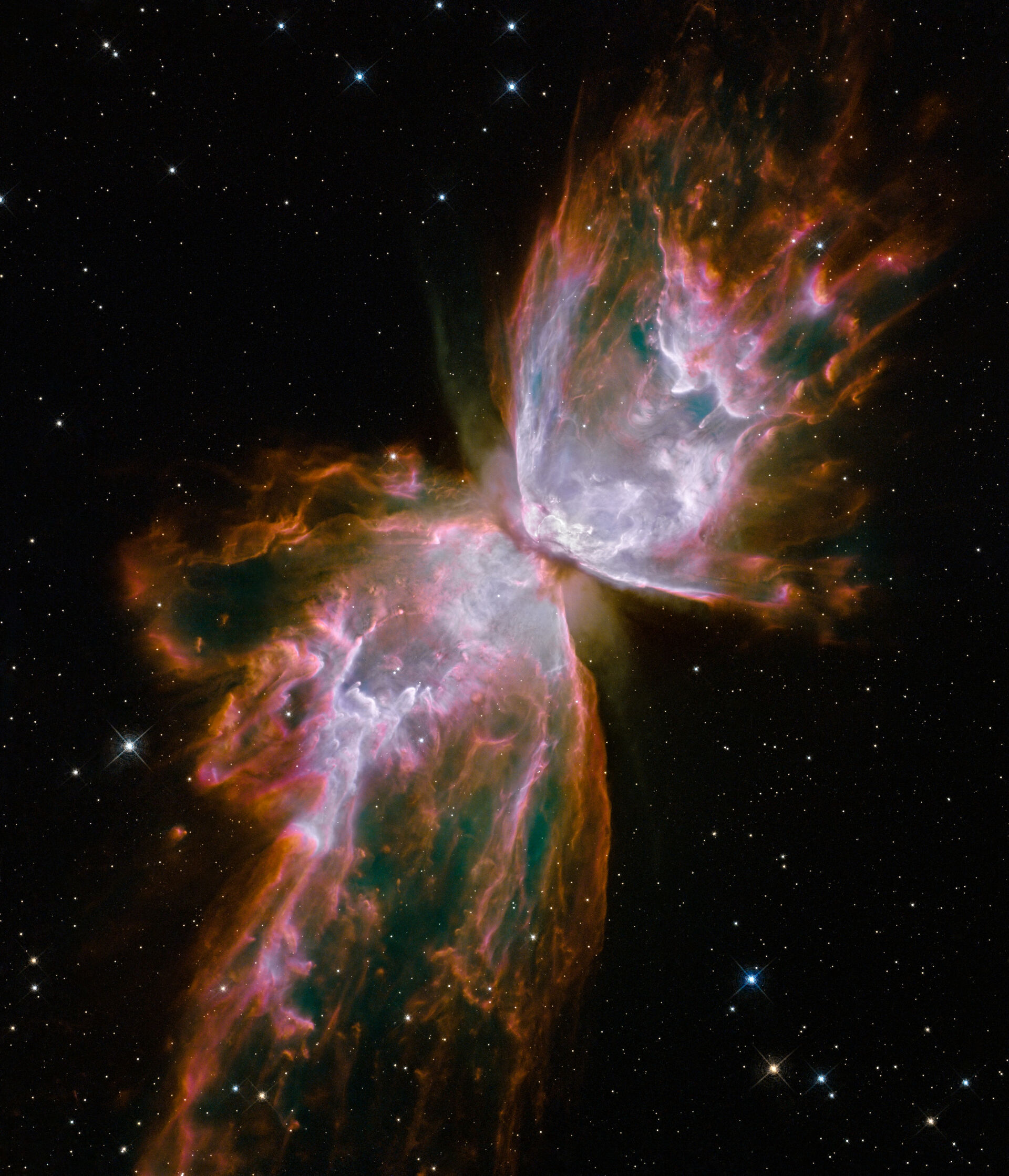
The birth of this interstellar butterfly, as seen here by the Hubble space telescope, began with a huge red giant about 1000 times the size of our own Sun. At first it lost its extended outer layers, casting some of it off at low speeds to create the central doughnut ring, and ejecting other gas perpendicular to the ring to create the elongaded butterfly wings. Then the star began heating up reaching a surface temperature of about 220 000 degrees Celsius and ejecting a stellar stream of charged particles travelling at 3.2 million kilometers per hour, which is ploughing through the existing gas of the butterfly wings and further modifying their shape. From one wing-tip to the other this butterfly has an impressive span of two light-years, equivalent to halfway from the Sun to the nearest star.
The Eagle Nebula
The Eagle Nebula, which also hosts the famous "Pillars of Creation", takes its name from this stellar spire. The young and hot burning stars borne from the gas surrounding the spire have bombarded it with strong stellar winds, heating up and blowing away gas into the shapes we see today. These winds may actually be inducing further starbirth by creating heated shockwaves the crash into colder gas, making it easier for stars to form.
A Perfect interstellar pattern
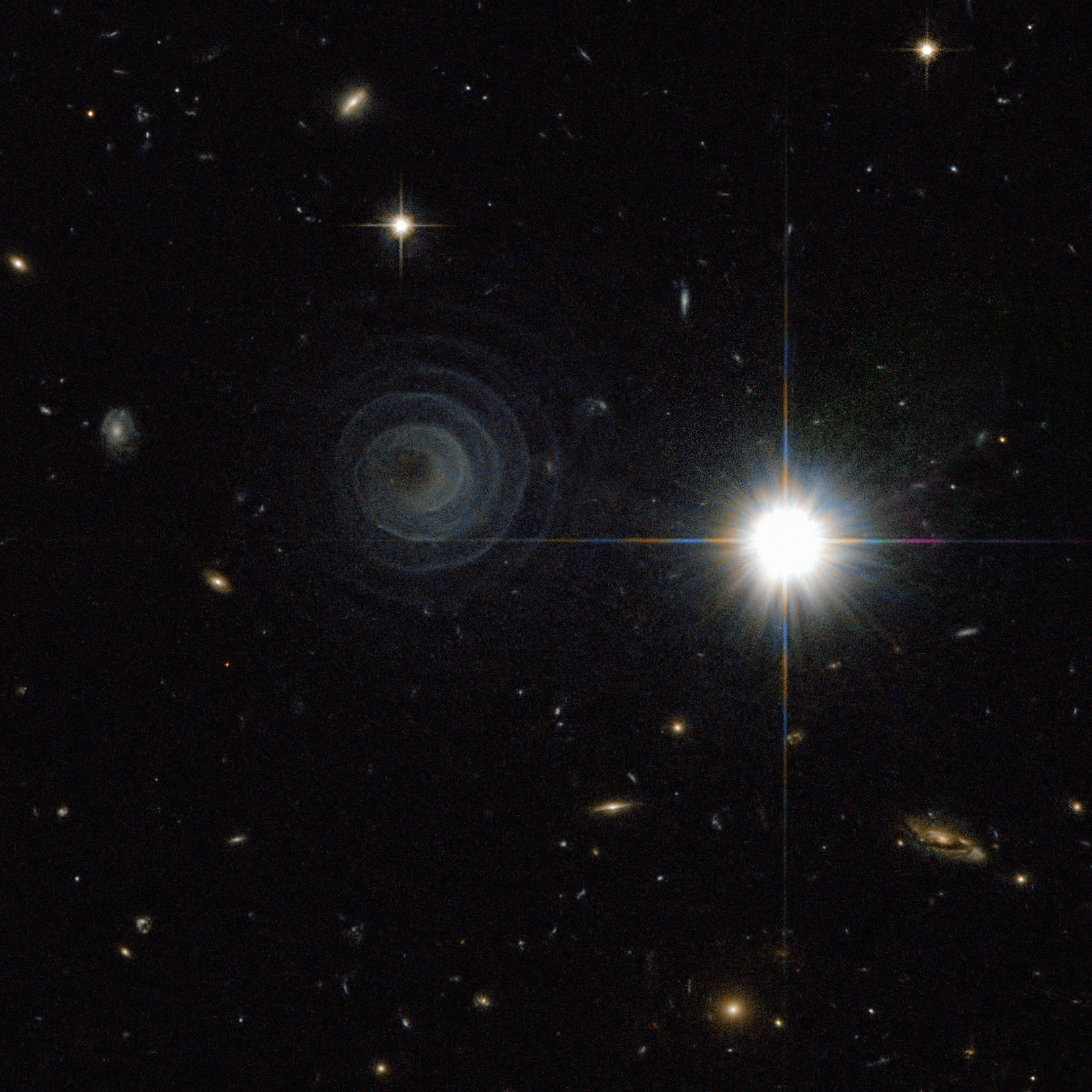
In this picture the Hubble space telescope shows one of the most perfect geometrical forms found in space; a thin spiral pattern winding around a star which is itself hidden behind a thick layer of dust. The regularity of the spiral suggests there is a corresponding regularity at the center creating the pattern and is though to be a binary, two stars caught in each others gravitational pull, with one of them shedding material as it nears the end of its life. The spacing between the layers of the spiral is about 800 years and suggests that the binary has an orbital period of the same amount of time, which is indeed the estimate found by using other methods.
The Red Spider Nebula
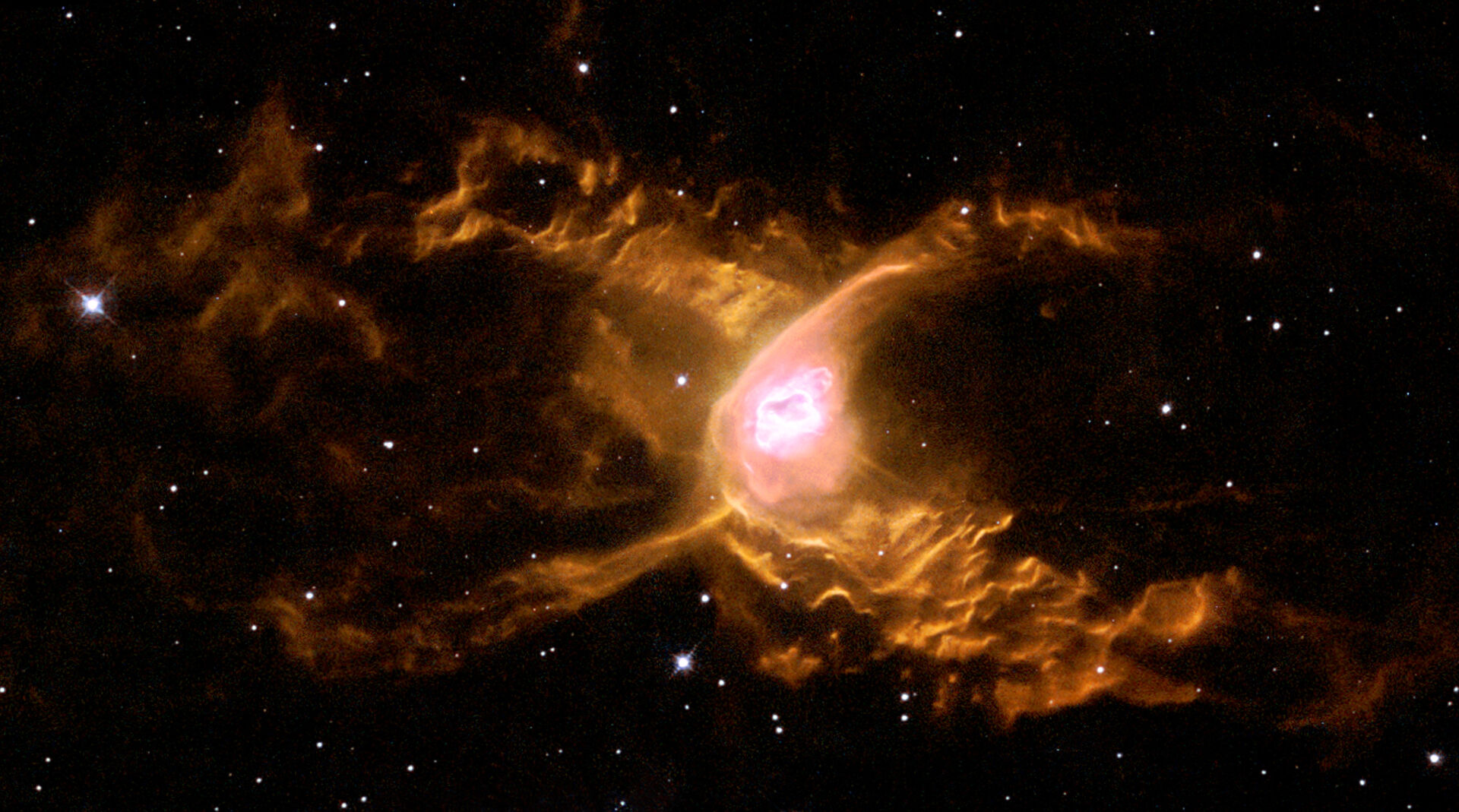
The central white dwarf in this spider-like nebula is though to have a surface temperature of 150 000 – 250 000 degrees Celsius, around 50 times hotter than the Sun. But it may even be as high as 500 000, making it one of the hottest stars we know of. The immense heat from the star produces winds at 10 000 degrees, which sweep across the surrounding gas creating wave-like structures and heats up atoms that radiate the light we see in this Hubble space telescope picture. The two lobes of radiating gas is though to be due to the presence of a companion star to the central white dwarf, but a shell of dust hides the central star making it difficault to determine what exactly is happening at the center of this nebula.
April 24, 2020: Cosmic Snake, Return of the Jedi, The many layers of Jupiter , The 30th Anniversary Image
Cosmic Snake
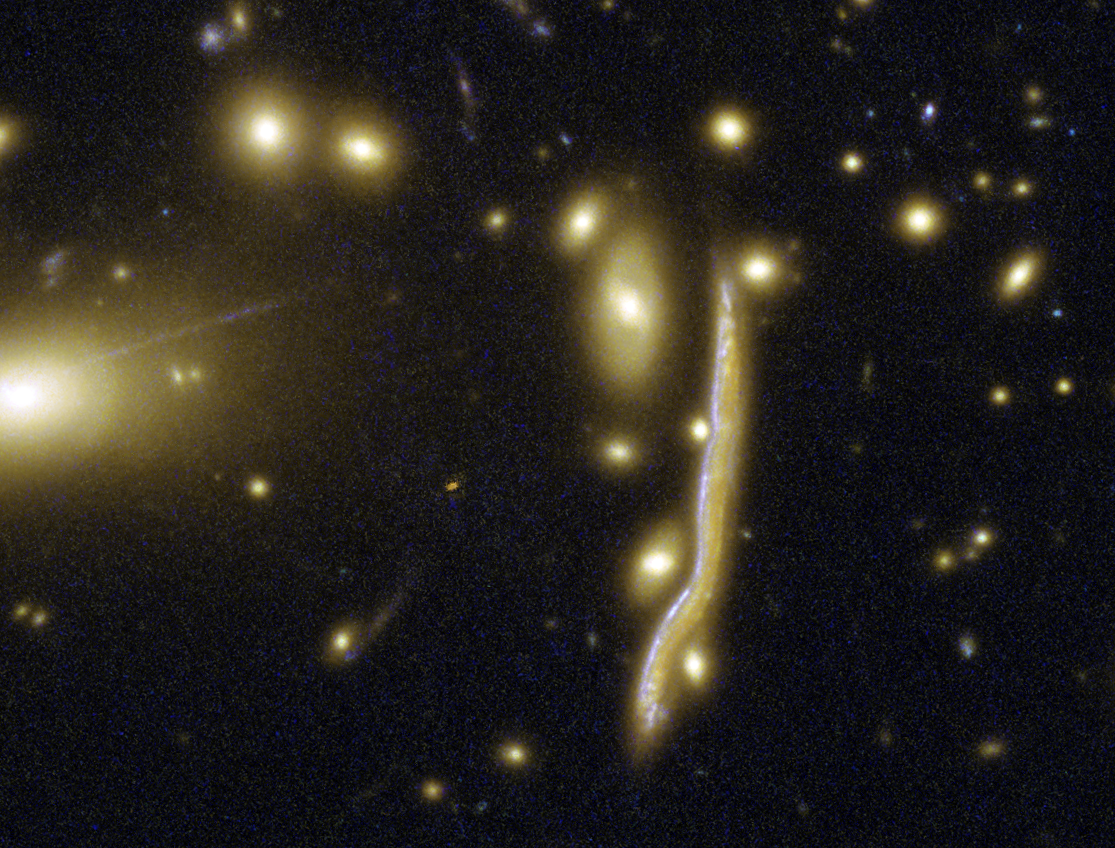
The massive gravitational forces from the cluster of galaxy in the foreground has distorted the light from a distant galaxy into the serpent-like shape winding its way through the galaxies that we see in this Hubble Space Telescope picture. The light from the galaxy was emitted when the universe was somewhere between one half and one third of the size it is today, but gravitational magnification allows us to resolve the clumpy structure of the galaxy which shows signs of intense star formation. Scientists can therefore use pictures like this to understand the lives of distant galaxies.
Return of the Jedi
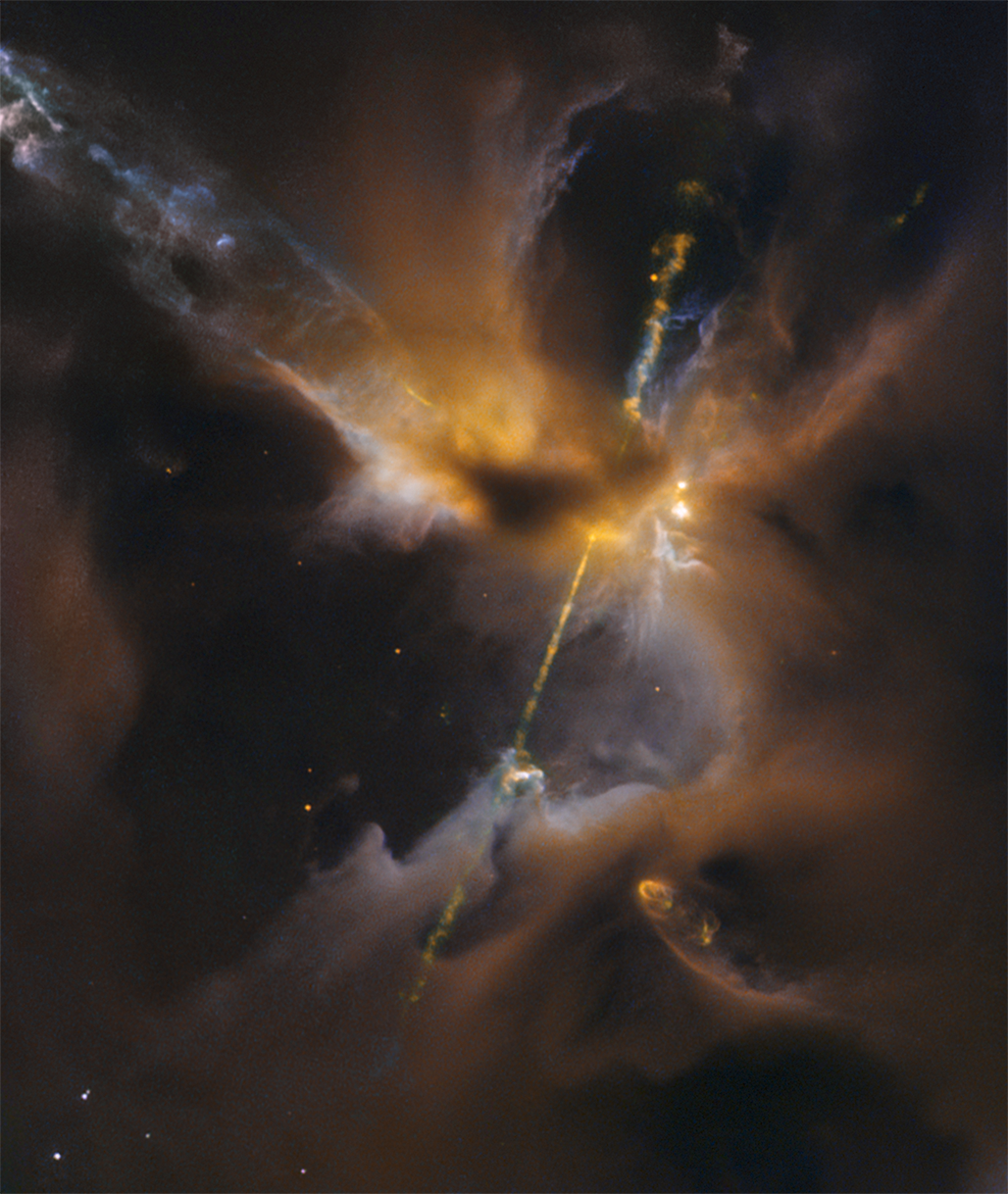
As stars are being born the orbiting gas falling into the young stars can be flung out in collimated beams, creating the lightsaber-like jets seen in this Hubble Space Telescope picture. The jets can extend several light-years into space, and if they impact nearby clouds of gas and dust the collision can produce shock waves that emit visible light.
The many layers of Jupiter
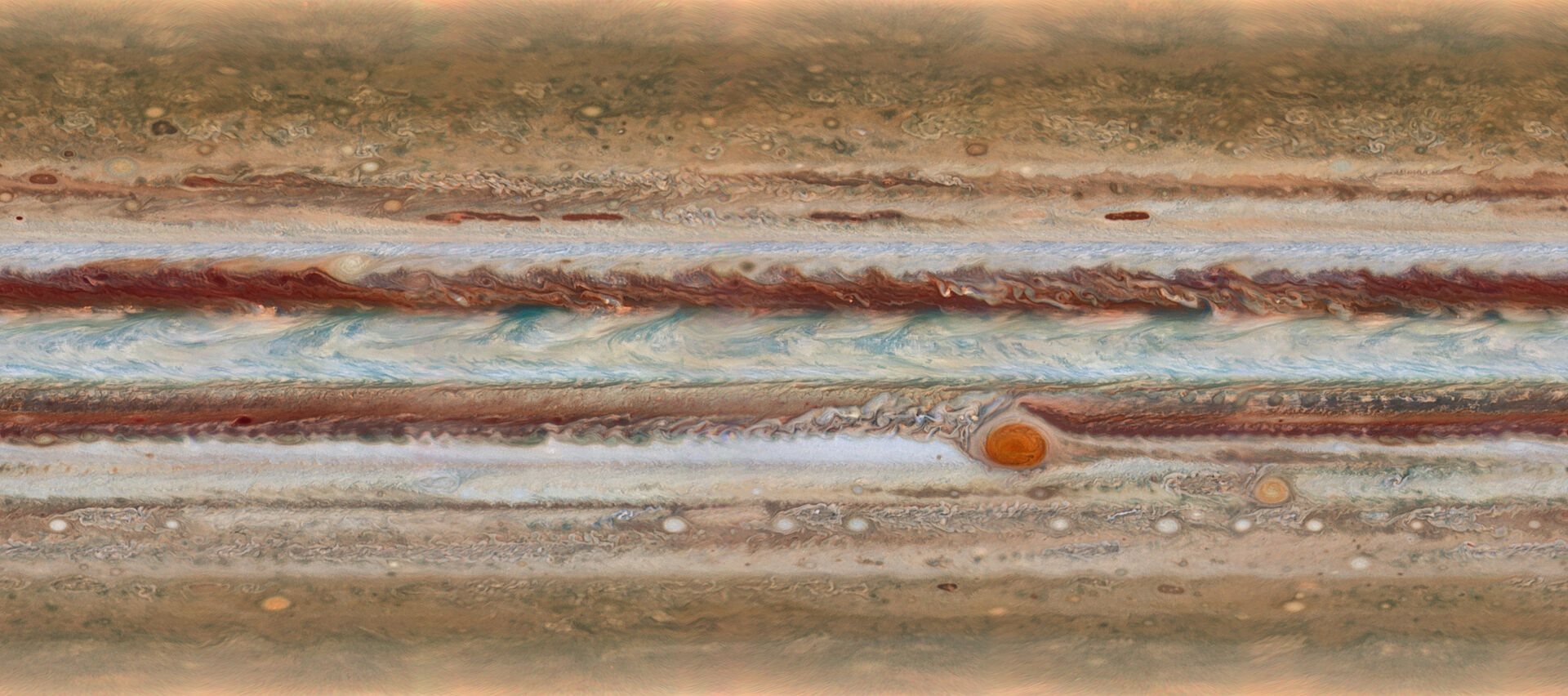
In this flat map of Jupiter, made by stitching together multiple images from the Hubble Space Telescope, the beauty of Jupiter's many layers of swirling gas can be fully appreciated. The layers move at different speeds, causing turbulence and storms at the boundaries. The most prominent of these is the Great Red Spot, a giant storm twice the diameter of Earth that has been raging for at least 300 years. Recently a "Great Cold Spot" has been discovered at the planet's north pole and is believed to be related to the fantastic auroras produced by Jupiter's strong magnetic fields.
The Hubble Space Telescope’s 30th Anniversary image: the Cosmic Reef
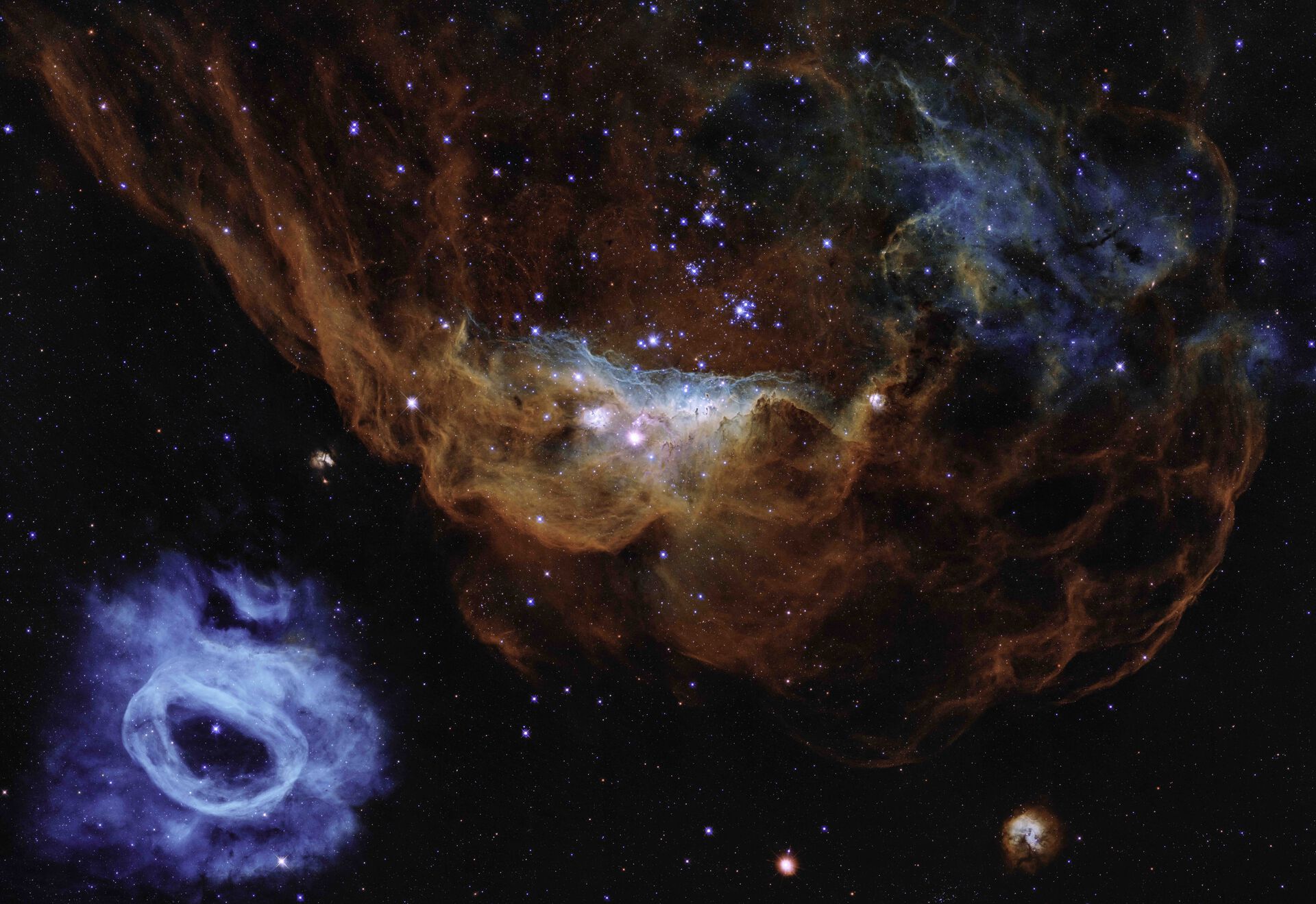
To commemorate three decades of operations, the new anniversary image is one of the most photogenic examples of the many turbulent stellar nurseries the telescope has observed during its 30-year lifetime The portrait features the giant nebula (NGC 2014) and its neighbor (NGC 2020) are part of a vast star-forming region in the Large Magellanic Cloud, a satellite galaxy of the Milky Way, approximately 163,000 light-years away.
The image is nicknamed the “Cosmic Reef,” because it resembles an undersea world.
